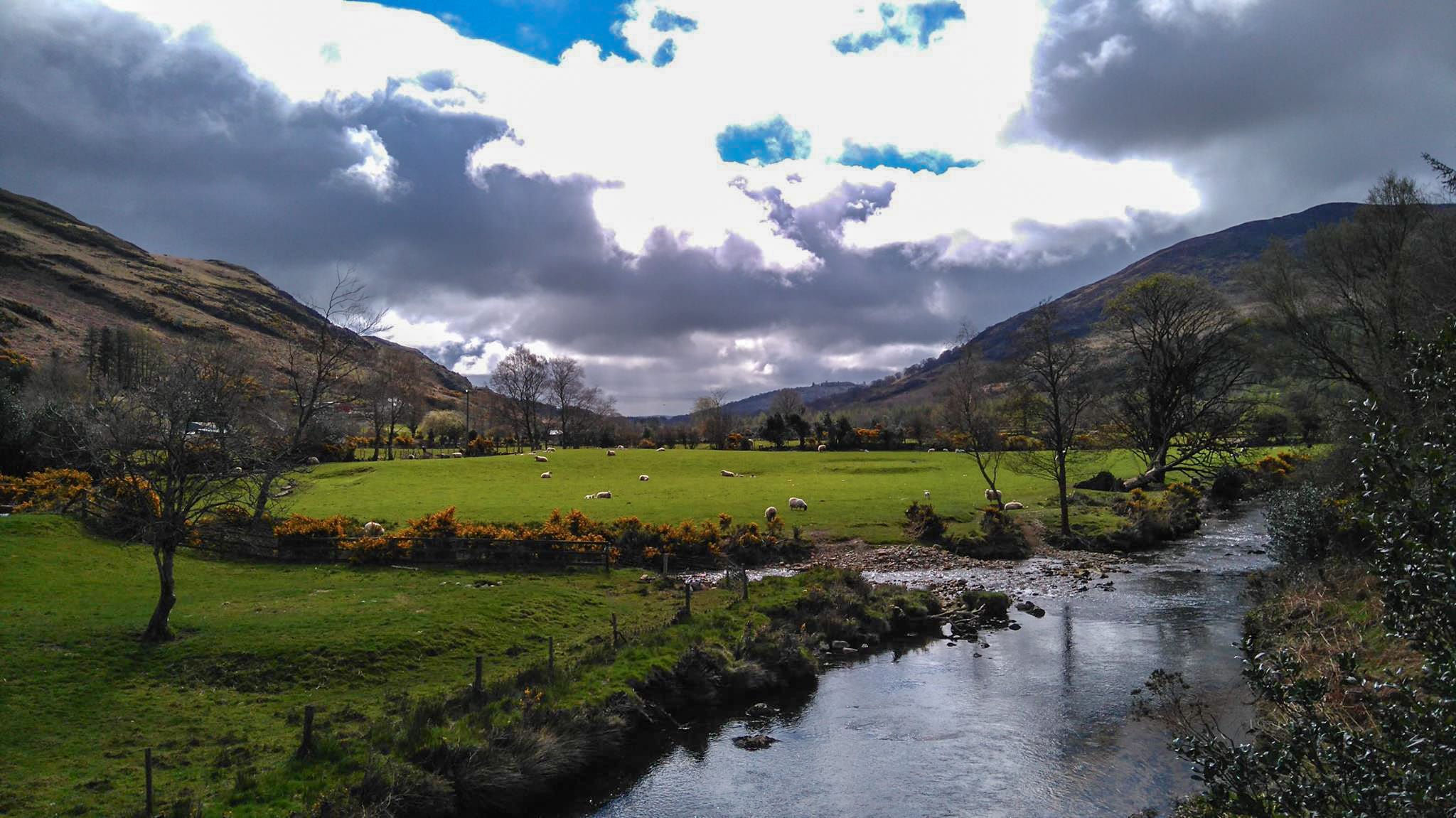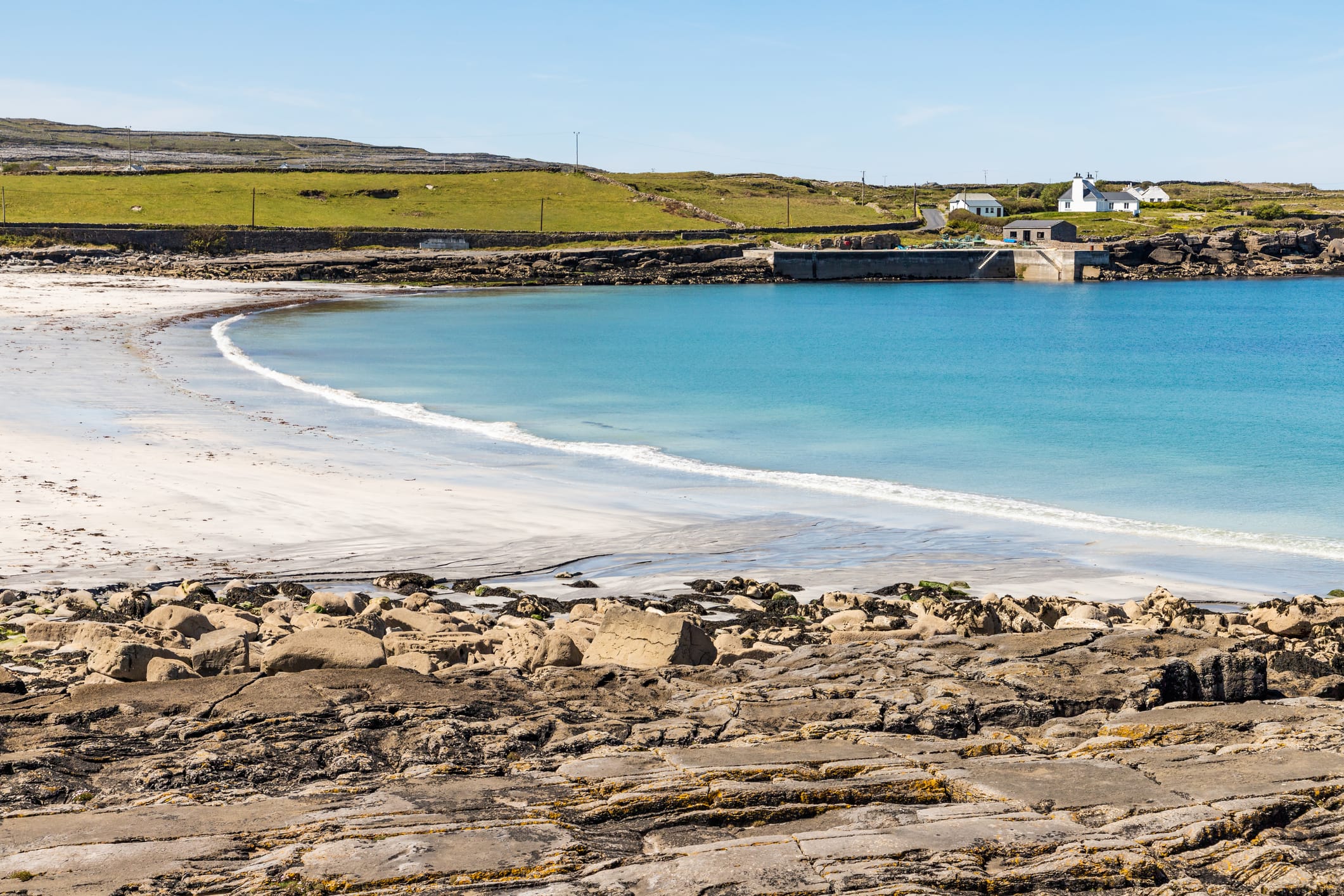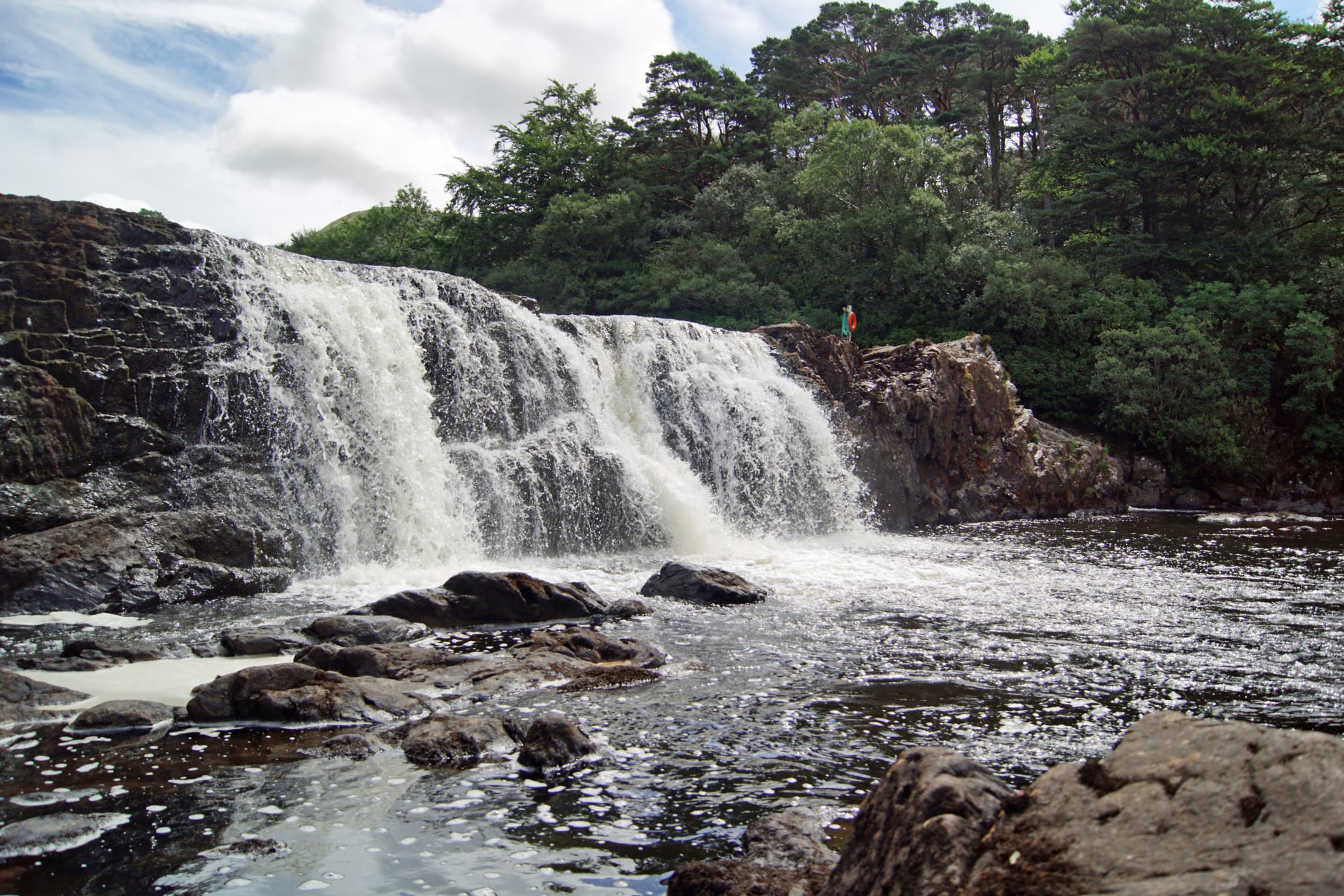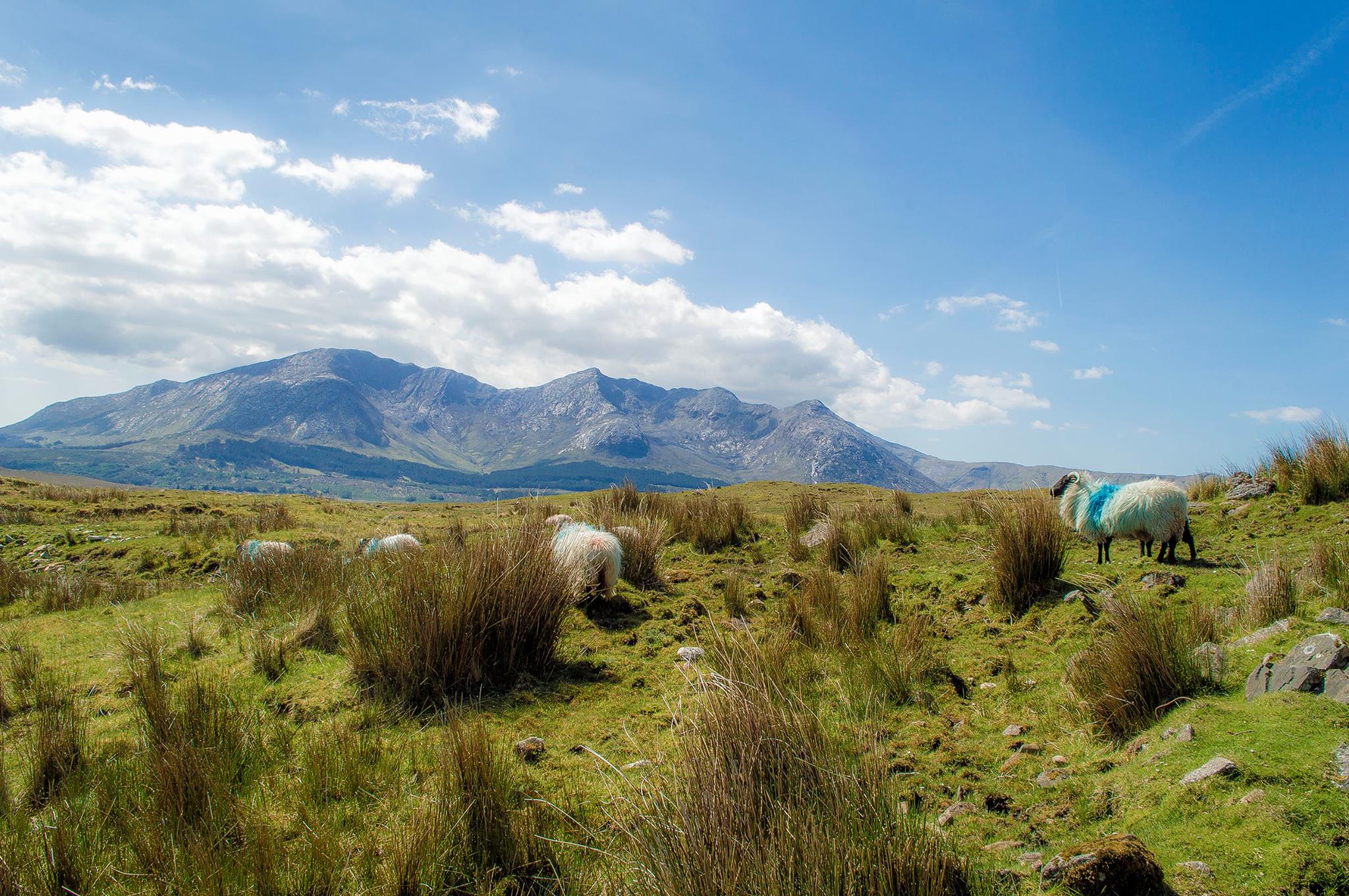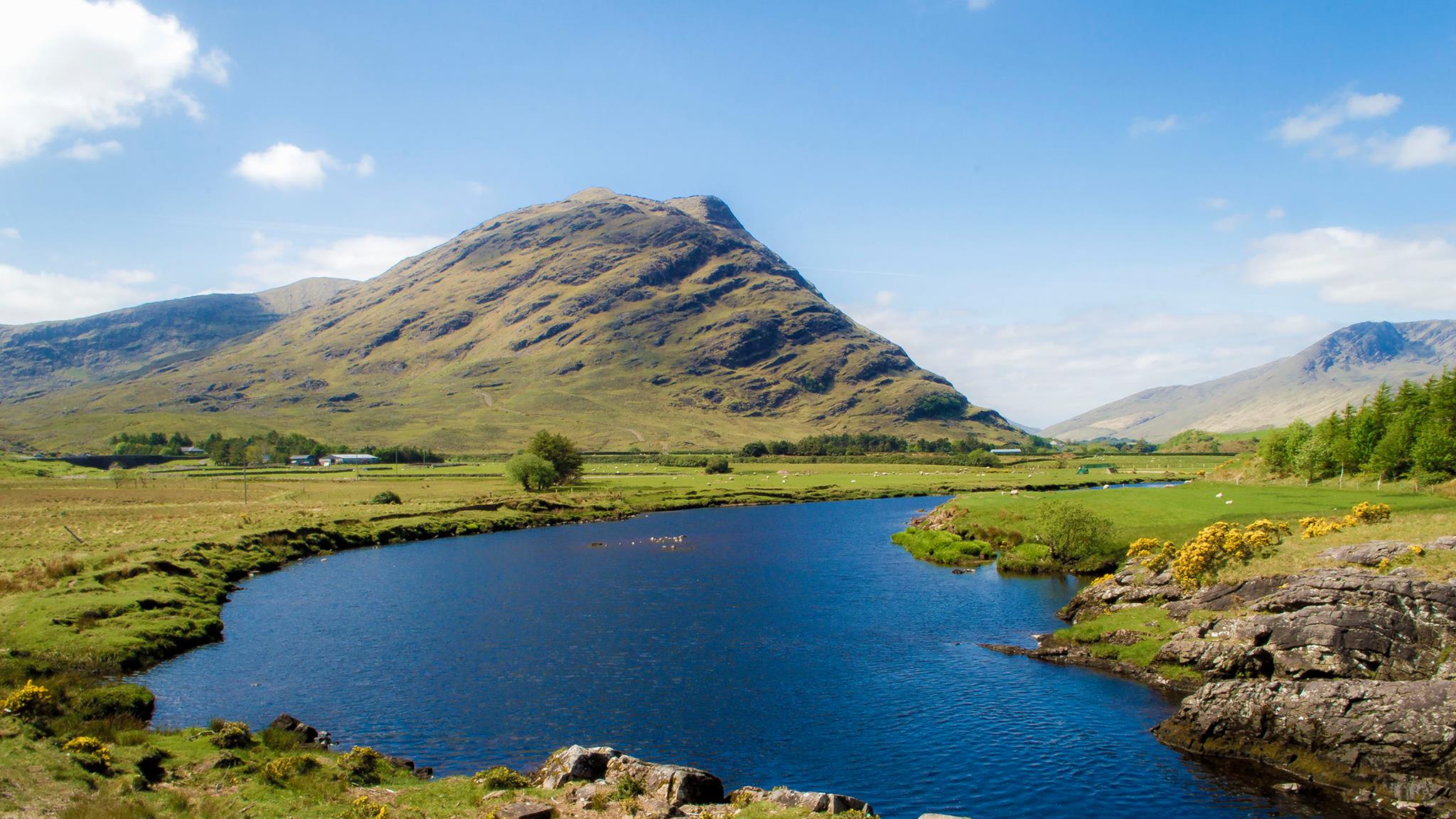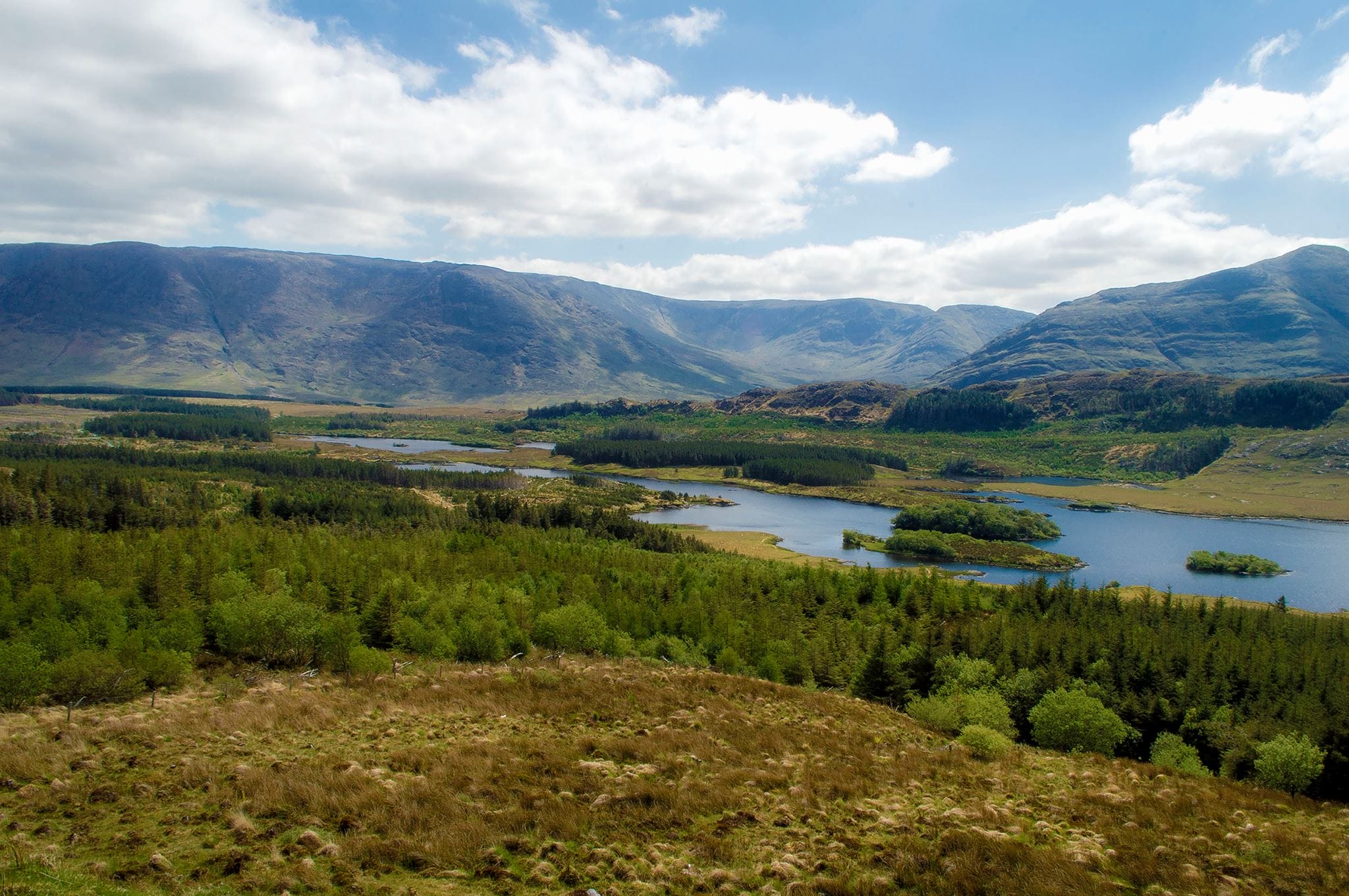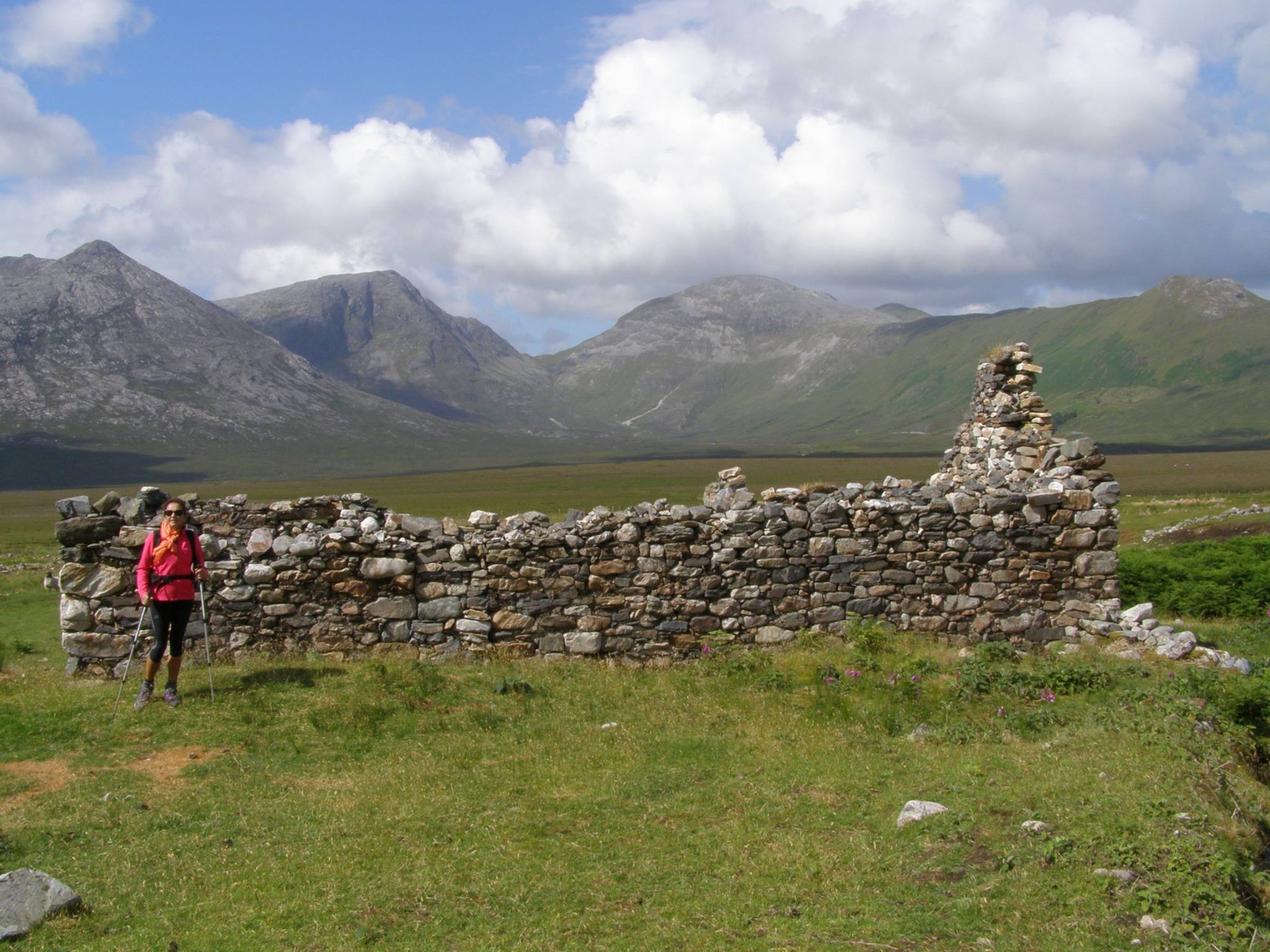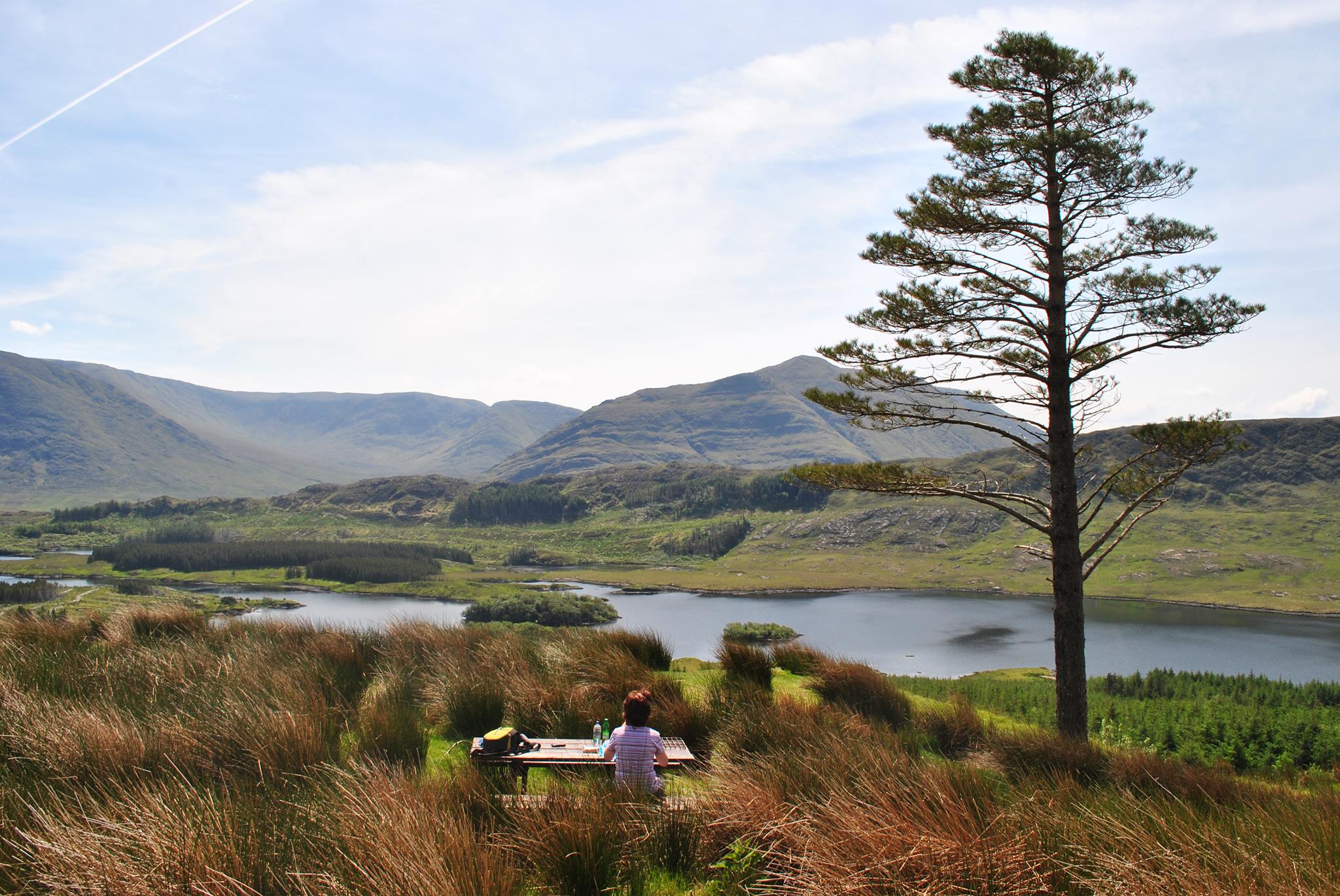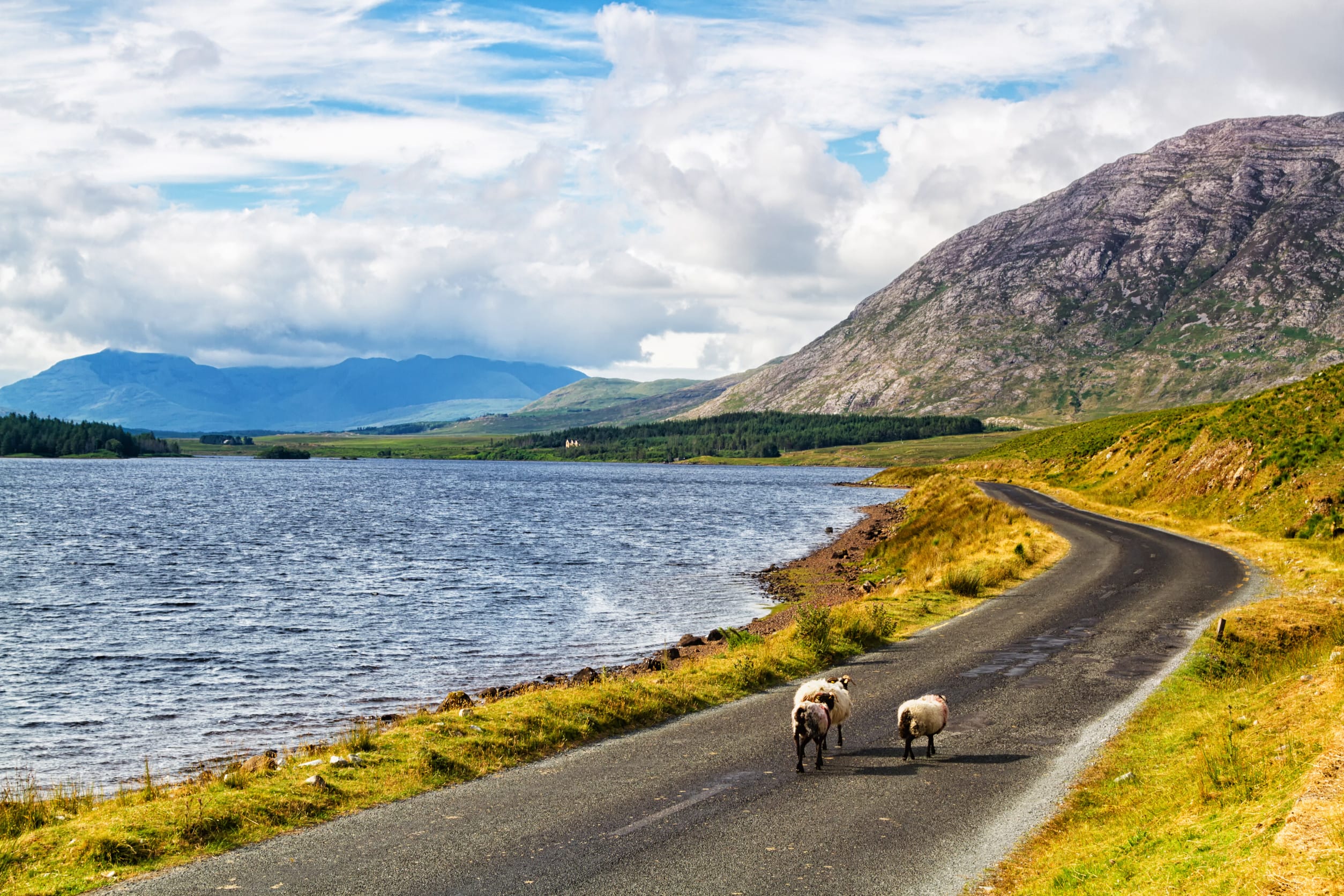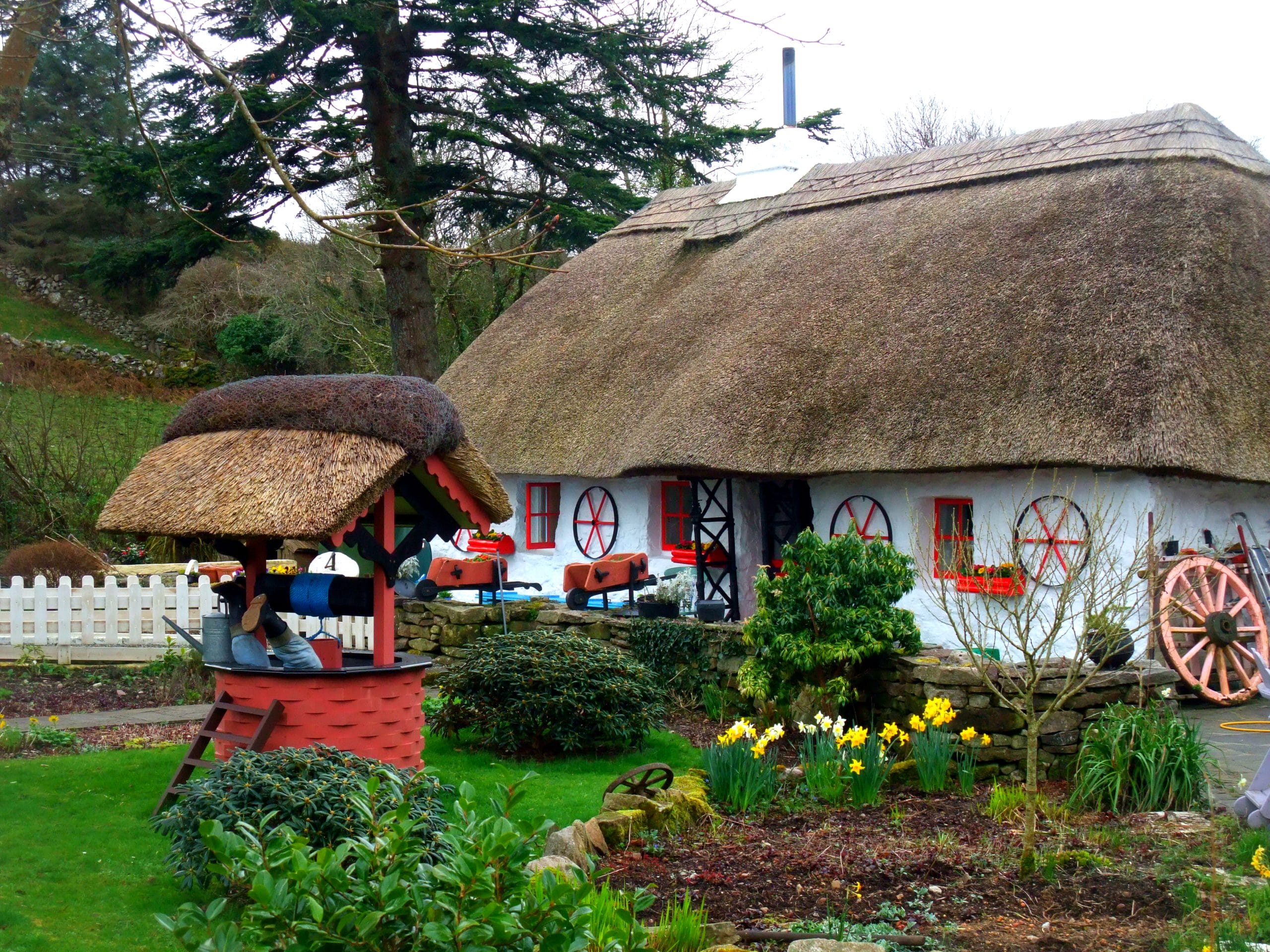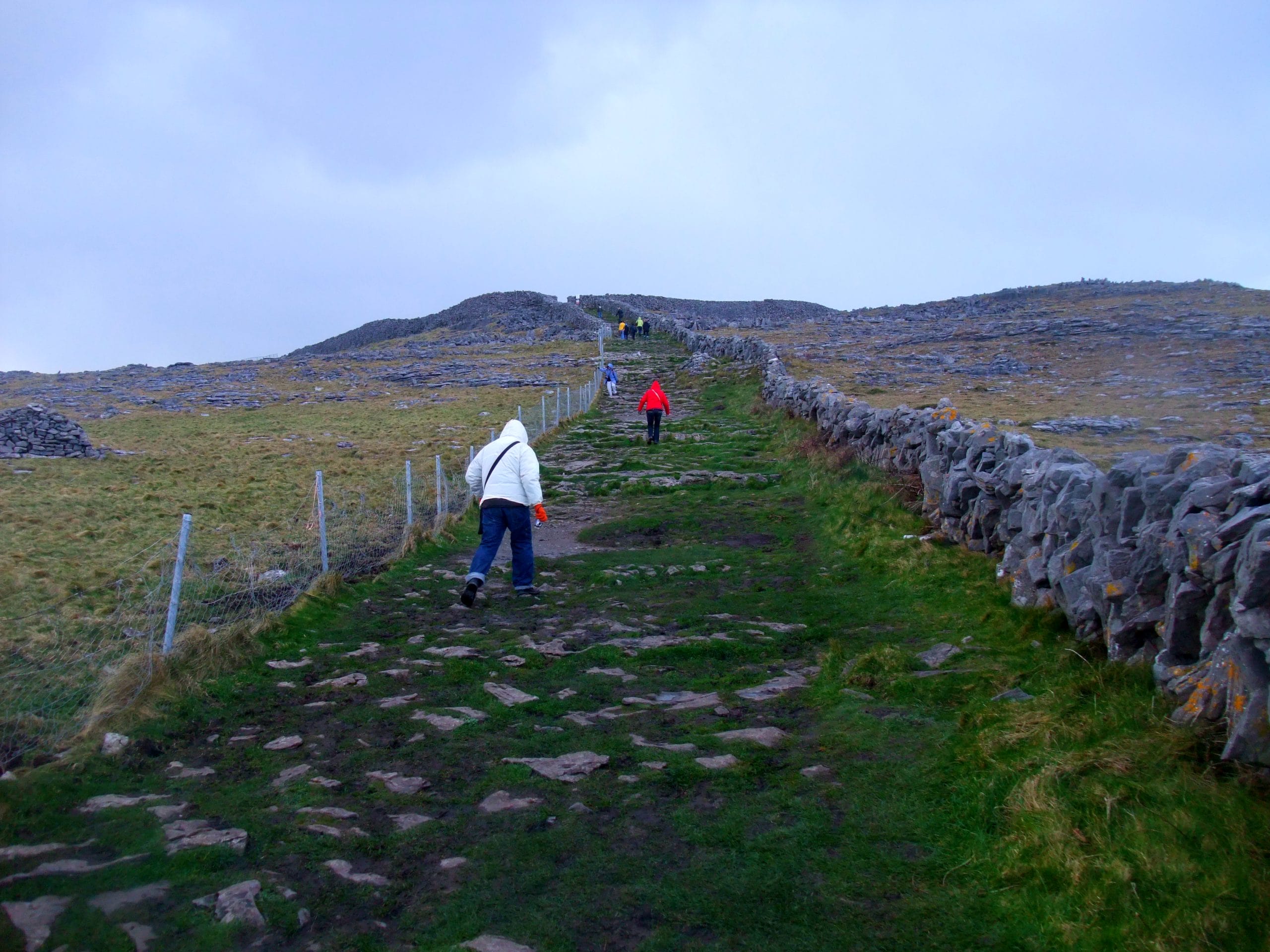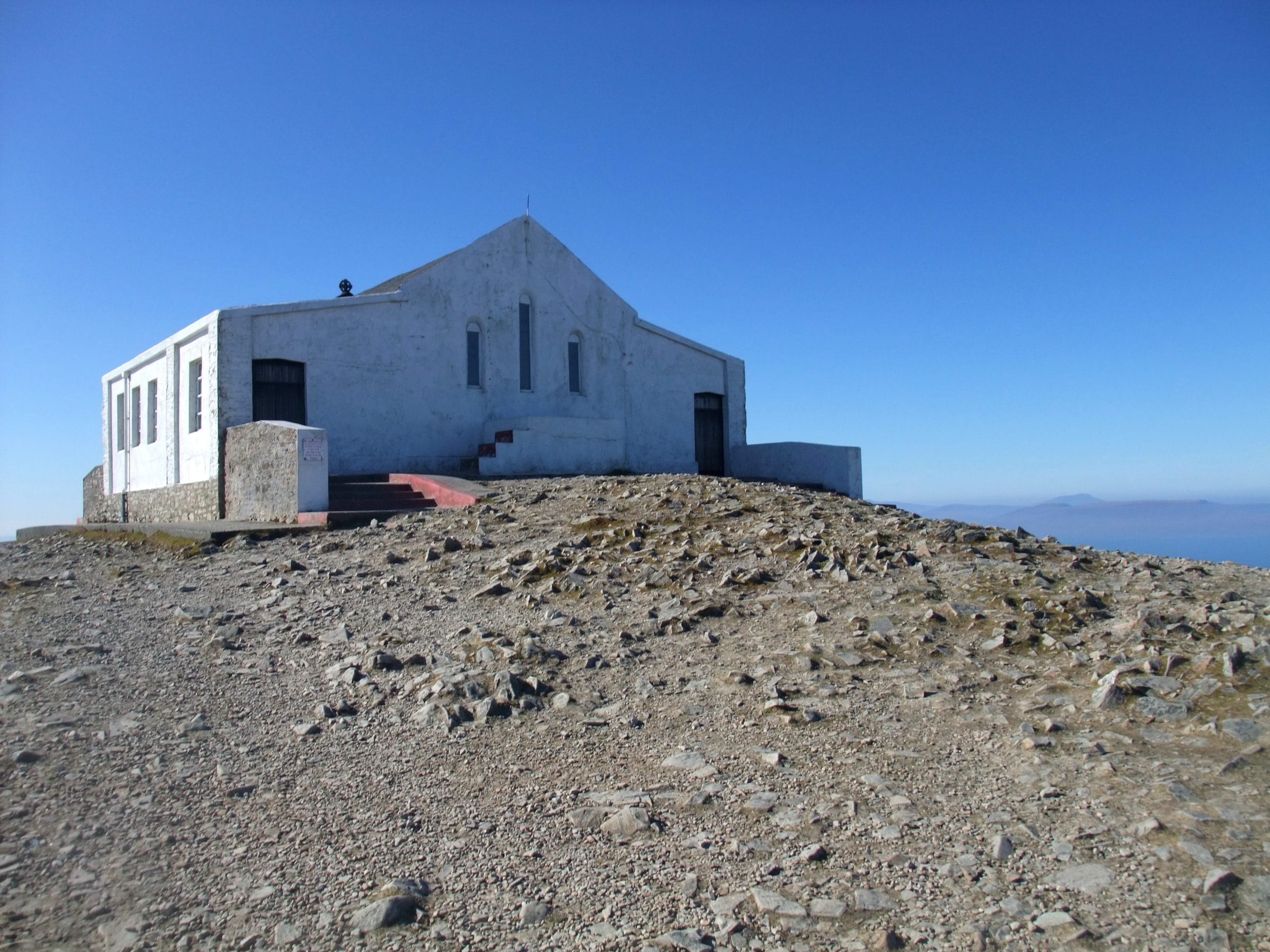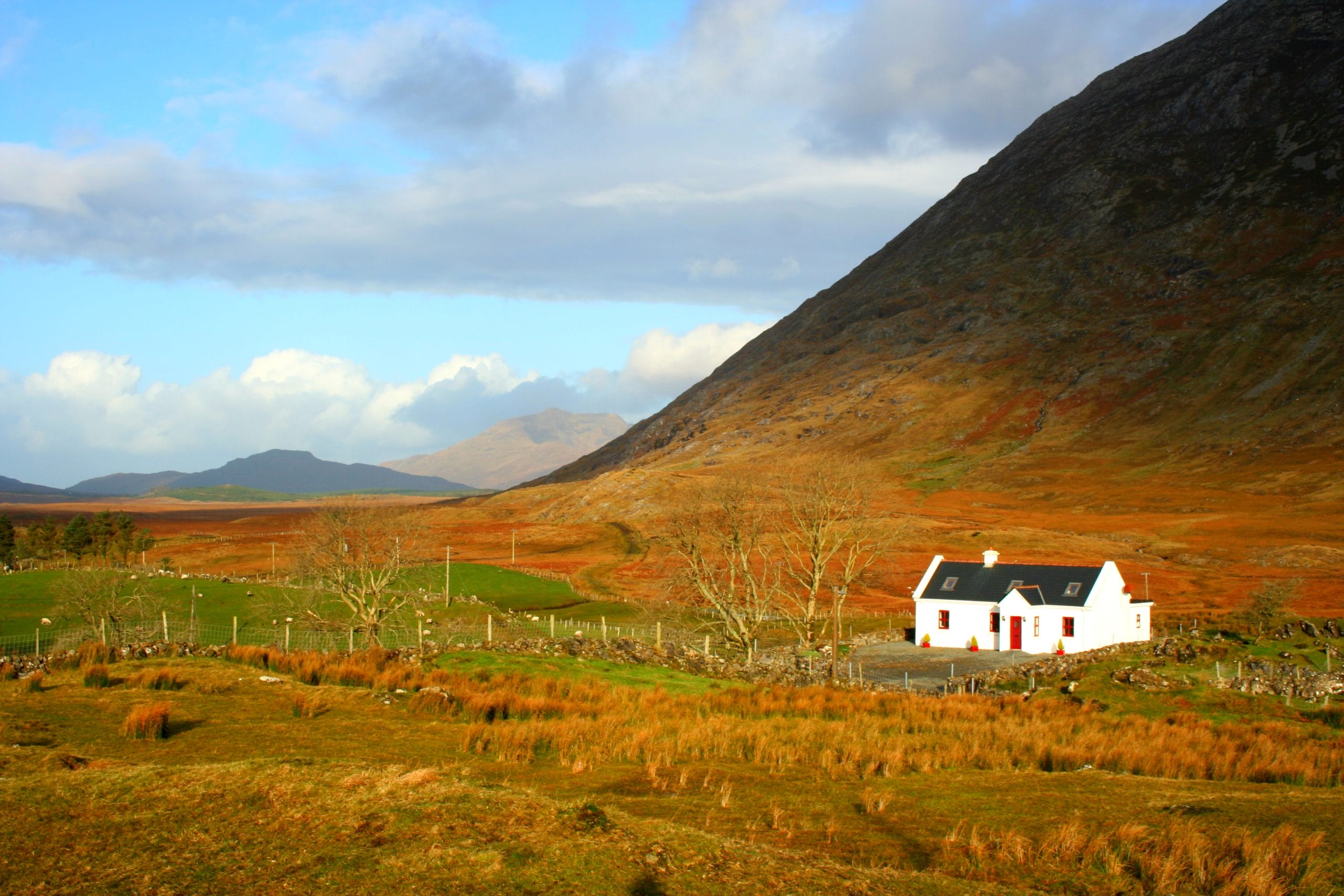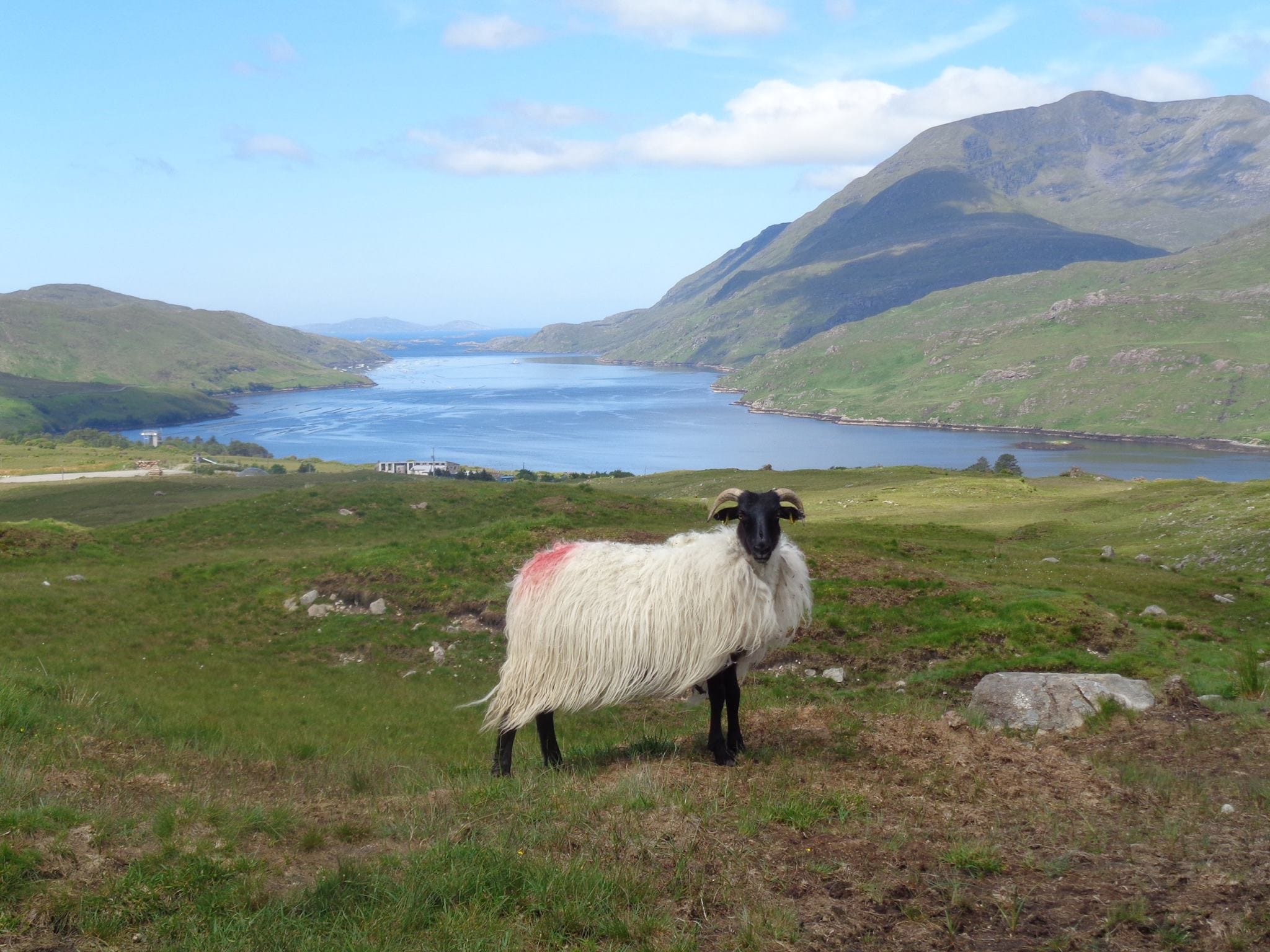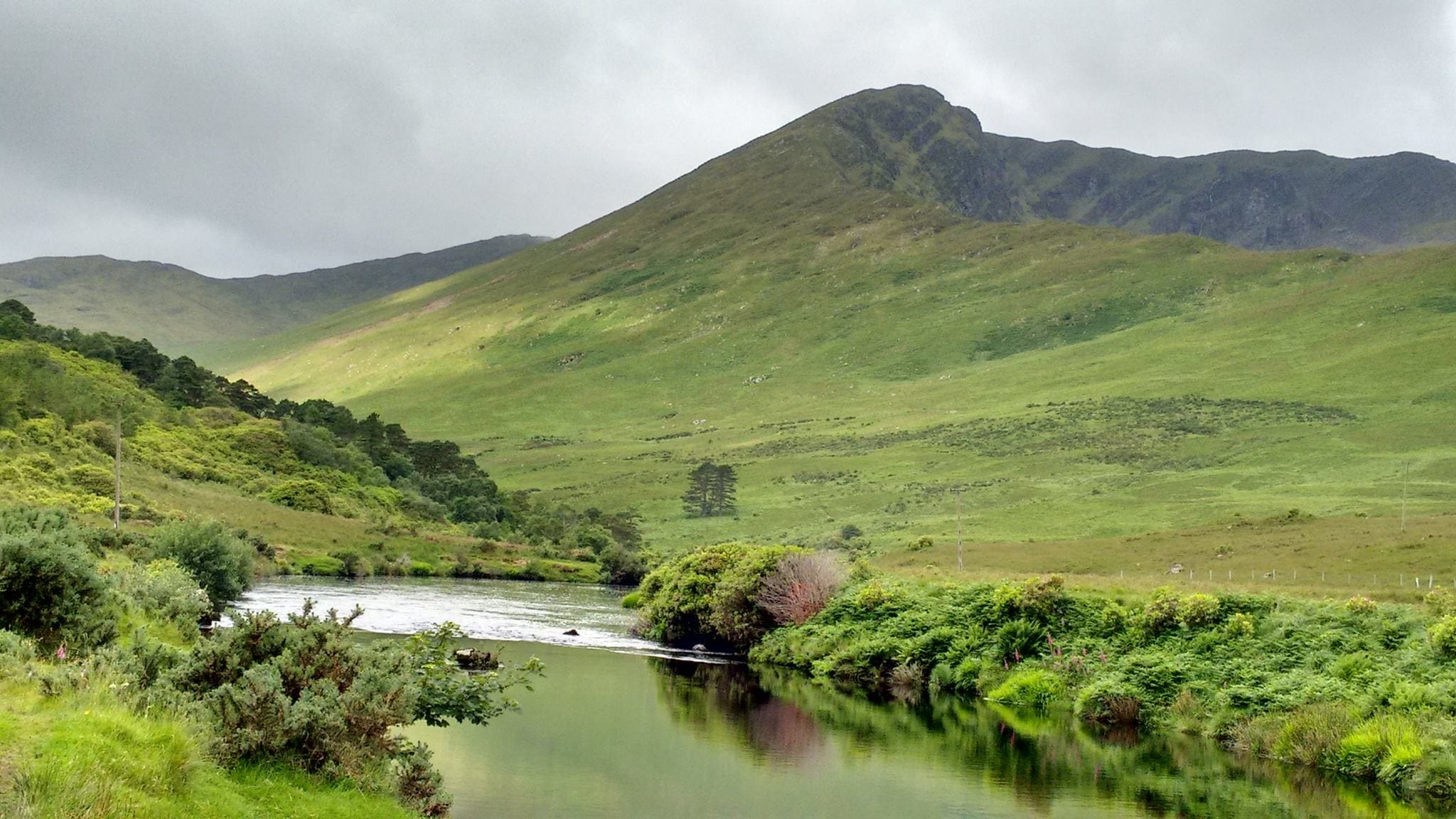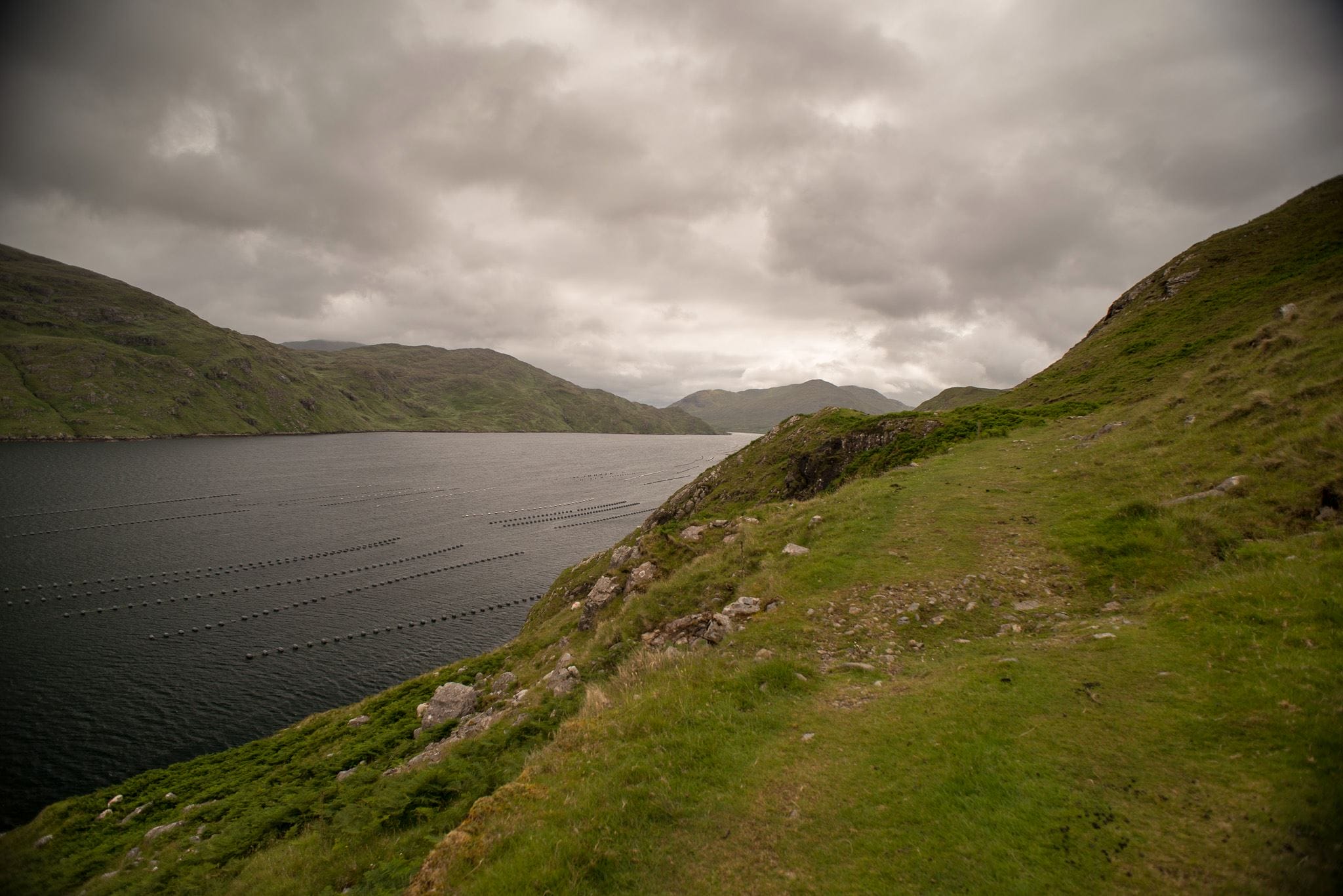Route Overview
Where is Connemara & the West of Ireland trail?
Our Connemara & West of Ireland trail takes in the beautiful Connemara region, which is a wild and mountainous expanse located in County Galway in Ireland, along with the wider West of Ireland region to include both the Aran Islands and South Mayo.
Travel back to ‘old-world’ Ireland by hiking through the dramatic landscape of Connemara in the wild, wild west. The epitome of ‘Gaelicness’, the west of Ireland boasts some of the country’s most luscious scenery that has little changed over the centuries. It is known as a place of legend, folklore, and beauty, and has often been regarded as a source of inspiration for poets, playwrights, artists and photographers.
The region is sparsely populated and contains some of Ireland’s few remaining pockets where the Gaelic language prevails. Wish “a céad míle fáilte romhat’ to the rocky Atlantic at your feet, while the coral beaches, grey-blue lakes, and rust-hued moors soften its blow.
Why should you walk the Connemara & The West of Ireland trail?
The Connemara & West of Ireland hiking tours explore Inis Mór, the largest of the Aran Islands off the coast of Galway, along with the popular southern part of the Western Way walking trail. This 100km (62 miles) long section of the Western Way trail connects the towns of Oughterard and Westport, leading you through spectacular scenery in the counties of Galway and Mayo, and fully immerses you in the Connemara wilderness. On Inis Mór you can explore the unique limestone landscape, complete with fascinating historic sites and ancient ruins. Meanwhile, the Western Way provides walkers with breathtaking scenery and charming villages as they hike through the rugged Connemara region.
Along the route, you can expect to find an abundance of lakes, forests, mountains, salmon rivers, waterfalls, fjords, and a holy mountain to take your breath away. The Twelve Bens and Maamturk Mountains are popular among hikers in Ireland, but the trail still offers an adventure off the beaten track. See authentic Irish thatched cottages, feast your eyes on turf-cutting in Connemara, and enjoy some quality food, drinks, and traditional music along the trail.
When is the best time to Walk Connemara and the West of Ireland?
The important thing to remember when visiting Connemara—or anywhere along the West of Ireland—is that the weather is extremely changeable. In general, the best time to hike in the region starts in April. By now the ground is drier after the wet winter months and the days have started to get longer again.
From April to mid-October, the conditions for hiking are generally good with mild temperatures and longer days. April to June are optimal for tours as not only are the days longer, but they also have the least rainfall on average. That said, it’s impossible to predict what the weather will be like in the west in any given month, so expect the unexpected, and prepare for sun, rain, wind, and—maybe—snow!
Furthermore, if you prefer to hike during the winter months (November to February) it’s important to note that many B&Bs and restaurants close along the trail during this period. What’s more, the short daylight hours make this time of the year a more intense challenge for hiking.
How long does it take to walk the Connemara & West of Ireland route?
With a distance of 144 kilometers (89 miles), the Connemara Route is a moderate-length long distance hiking trail. Depending on your fitness level and preferred pace you can complete the route in any number of days that you wish.
Many walkers complete the full route between 6 to 8 walking days. Thanks to the many small villages and towns along the trail, you can also create many different route options and stopover locations. Hillwalk Tours offers three different levels of difficulty: Gentle, Moderate, and Challenging. Within these levels, you can choose between 6 to 9-day hiking tours completing either the full route or part of it. An example route is the 9-day moderate hike, which explores east and west of Inis Mór before venturing to Oughterard. All days average about 5-6 hours hiking per day, but this can vary for certain sections while also being dependent on level of fitness and how many stops you take, before finishing the trail in Westport.
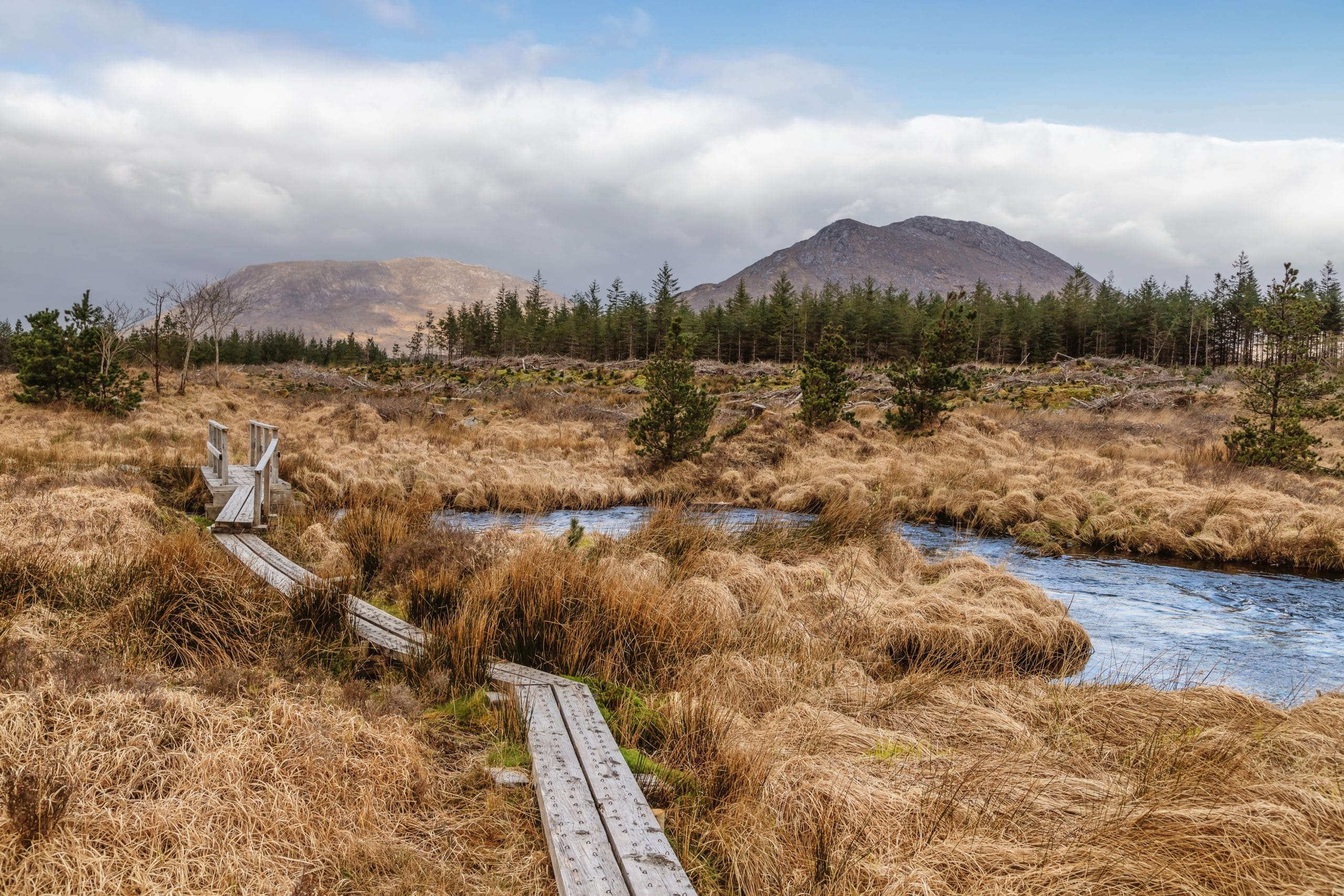
Tour Route
Types of Trails
When deciding on which hiking trail to book, you need to take your own physical capability and comfort levels in consideration.
At Hillwalk Tours, we grouped our trail routes into three categories depending on physical ability and personal preference. These are – gentle, moderate, and challenging. Each of these categories, depending on the destination, will include 4-day to 10-day itineraries, with customers given the option to add days where they see fit.
If you consider yourself as a part-time hiker who enjoys taking photos of the local scenery and frequently stopping to take in all of the surrounding beauty of the trail, we would recommend our ‘Gentle’ hikes. Our moderate hikes will suit people who exercise more frequently and plan on covering plenty of ground each day without going beyond their limits. Finally, our challenging hikes are for the more ambitious hikers who look to set off at the break of dawn and walk non-stop until they have reached their destination.
With regards to our Connemara & the West of Ireland trail, it is important to note that each hiking tour we offer along the trail follows the same official hiking trail. Each of our hiking category covers the following average hiking distance and time each day:
Gentle: 13-17km or 8-11 miles and between 4-6 hours
Moderate: 16-20km or 10-12.5 miles and between 5-7 hours
Challenging: 26-30km or 16-19 miles and between 5-8 hours per day
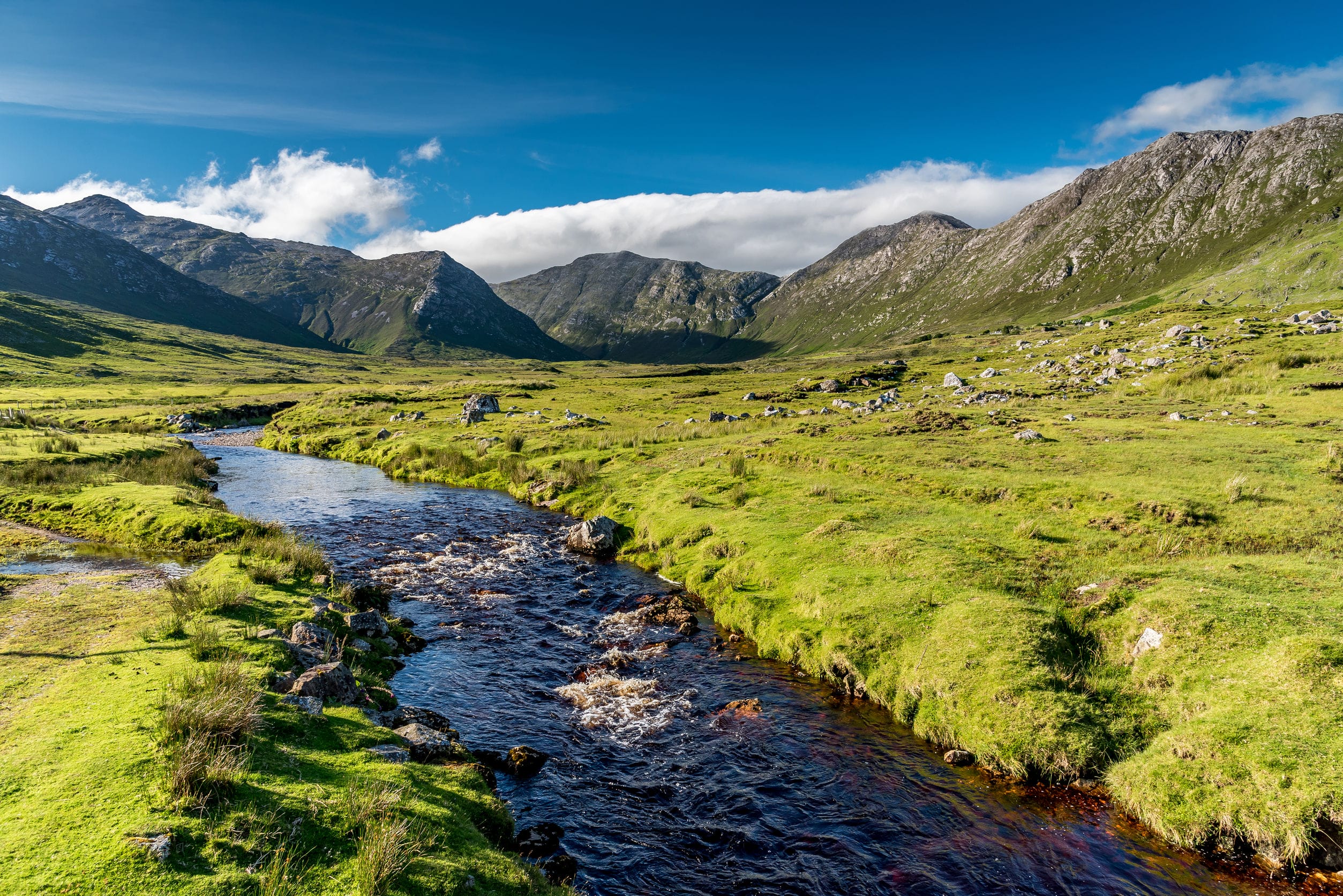
Hillwalk Tours Guide Notes
Walking our Connemara & the West of Ireland trail is an excellent introduction for walkers to the beautiful and scenic wildernesses of the Gaelic speaking Connemara in County Galway.
If you decide to walk the trail with Hillwalk Tours, you will receive a detailed walking pack once you have fully booked your hiking holiday. This walking pack will include detailed maps and unique route notes and walking directions written and constantly updated by our route development team. By personally walking each trail and creating our own detailed route notes, it allows us to provide more itineraries, route options and alternatives than what you will typically find across generic guidebooks. It also includes GPS tracks meaning you will never have to worry about getting lost.
Starting and Finishing Point
Our Connemara & West of Ireland walking tours explore Inis Mór, a Gaelic speaking island with strong Irish history, the largest of the Aran Islands situated in the Atlantic Ocean off the coast of Galway. The trail also incorporates the most popular southern part of the official Western Way walking trail. This 100km (63 miles) long section, which connects the famous angling town of Oughterard and Westport, voted as one of the best places to live in Ireland. You will be led through spectacular scenery throughout the counties of Galway and Mayo.
Our longer tour itineraries start with, as previously mentioned, a ferry journey to the island of Inis Mór, one of the legendary Aran Islands. It is a place of secluded beaches, rugged coasts, cliffs, ancient monuments and storied history. After you’ve scrubbed up on all your Irish history and foclóir, you then return to the mainland and continue your trail in Oughterard. The path follows the western edge of the second largest lake in Ireland, Lough Corrib, and heads northwards into a magnificent wilderness of mountain and bogland before reaching civilisation again at the remote village of Maam.
After you’ve explored the beautiful wilds of Maam, you will traverse the rugged yet beautiful Maumturk Mountains through a mountain pass, of which the sacred and religious site of Mám Éan, a holy place that has attracted pilgrims since the early Christian period can be found. You then start to descend again into the spectacular Inagh Valley where the route takes you between the mesmerising Twelve Bens and the Maumturks mountain ranges. Make sure to stop and take in all the natural beauty that surrounds you!
From here, you will explore some beautiful forest trails that will lead you to the charming village of Leenane on the shores of Killary Harbour, often referred to as Ireland’s only true fjord. If you fancy a little bit more exploring along the way, you can take boat trips on the fjord from here! After Leenane, the trail steps foot into County Mayo at Ashleigh Falls. The wide cascade falls over a rocky ledge on the River Erriff giving you the perfect photo opportunity.
Along the route hikers frequently enjoy views of Croagh Patrick, the holiest mountain in Ireland. Each year, ‘The Reek’ attracts an abundance of people to climb to the summit on the last Sunday in July. The trail then crosses its eastern slopes, which often offer views over the many islands of Clew Bay, before finishing in the pretty, vibrant town of Westport with its many great pubs and restaurants.
Sample Connemara & the West of Ireland Itineraries
The following are examples of Hillwalk Tours Gentle, Moderate and Challenging itineraries of hiking the Connemara & the West of Ireland.
Gentle 7-Day
Day 1: Arrival in Oughterard
Day 2: Oughterard (Glann Church) – Maam Valley (10.6 miles/17km)
Day 3: Maam Valley – Lough Inagh (9.3 miles/15km)
Day 4: Lough Inagh to Leenane (9.3 miles/15km)
Day 5: Leenane – Drummin (10.6 miles/17km)
Day 6: Boleybrian – Westport (7.5 miles/12km)
Day 7: Departure from Westport
Gentle 9-Day
Day 1: Arrival in Galway City and transfer to Aran Islands
Day 2: Explore Inis Mór – The Western Side (9.9 or 17.4 miles/16km or 28km)
Day 3: Explore Inis Mór – The Eastern Side (7.5 or 9.3 miles/12km or 15km)
Day 4: Oughterard (Glann Church) – Maam Valley (10.6 miles/17km)
Day 5: Maam Valley – Lough Inagh (9.3 miles/15km)
Day 6: Lough Inagh to Leenane (9.3 miles/15km)
Day 7: Leenane – Drummin (10.6 miles/17km)
Day 8: Boleybrian – Westport (7.5 miles/12km)
Day 9: Departure from Westport
Moderate 7-Day
Day 1: Arrival in Oughterard
Day 2: Oughterard (Glann Church) – Maam Valley (10.6 miles/17km)
Day 3: Maam Valley – Lough Inagh (9.3 miles/15km)
Day 4: Lough Inagh to Leenane (9.3 miles/15km)
Day 5: Leenane – Drummin (Option A/Option B) (9.3 or 13 miles/15 or 21km)
Day 6: Drummin – Westport (11.8 miles/19km)
Day 7: Departure from Westport
Moderate 9-Day
Day 1: Arrival in Galway City and transfer to Aran Islands
Day 2: Explore Inis Mór – The Western Side (9.9 or 17.4 miles/16km or 28km)
Day 3: Explore Inis Mór – The Eastern Side (7.5 or 9.3 miles/12km or 15km)
Day 4: Oughterard (Glann Church) – Maam Valley (10.6 miles/17km)
Day 5: Maam Valley – Lough Inagh (9.3 miles/15km)
Day 6: Lough Inagh to Leenane (9.3 miles/15km)
Day 7: Leenane – Drummin (Option A/Option B) (9.3 or 13 miles/15 or 21km)
Day 8: Drummin – Westport (11.8 miles/19km)
Day 9: Departure from Westport
Challenging 6-Day
Day 1: Arrival in Oughterard
Day 2: Oughterard – Maam Valley (16.2 miles/26km)
Day 3: Maam Valley – Leenane (18.6 miles/30km)
Day 4: Leenane – Drummin (Option A/Option B) (10.6 or 13 miles/17 or 21km)
Day 5: Drummin – Westport (15.5 miles/25km)
Day 6: Departure from Westport
Challenging 8-Day
Day 1: Arrival in Galway City and transfer to Aran Islands
Day 2: Explore Inis Mór – The Western Side (9.9 or 17.4 miles/16km or 28km)
Day 3: Explore Inis Mór – The Eastern Side (7.5 or 9.3 miles/12km or 15km)
Day 4: Oughterard – Maam Valley (16.2 miles/26km)
Day 5: Maam Valley – Leenane (18.6 miles/30km)
Day 6: Leenane – Drummin (Option A/Option B) (10.6 or 13 miles/17 or 21km)
Day 7: Drummin – Westport (15.5 miles/25km)
Day 8: Departure from Westport
Interested in checking out sample itineraries for some of our Gentle, Moderate and Challenging tours? Check out our website for more information.
Currency and Expenses
The currency used throughout Ireland is the Euro (€).
The cost of food, drinks, and activities in Connemara can vary depending on several factors such as the type of establishment, the time of year, and personal preferences.
Eating out in restaurants in Connemara can range from affordable to moderately expensive, depending on the type of cuisine and establishment. A meal for one person in a mid-range restaurant can cost around €15 to €30, excluding drinks. If you prefer more upscale dining, the prices can go higher. The cost of drinks in Connemara, particularly in pubs, can vary. A pint of beer or a glass of wine can cost around €4 to €8, depending on the establishment. Prices may be higher in touristy areas or during peak seasons.
Connemara offers a variety of activities, including boat trips and exploring historical sites. The prices for these activities can vary. As mentioned above, it’s worth noting that prices in Connemara can be higher during the peak tourist season (June, July and August) compared to the off-peak season.
Connemara & the West of Ireland Accommodation and Services
Along the Connemara & the West of Ireland trail, you can find various accommodations and services to cater to hikers’ needs.
Hotels & Guesthouses
There are several hotels and guesthouses available along the Connemara & the West of Ireland trail. These accommodations offer comfortable rooms, dining facilities, and amenities for travellers.
Bed & Breakfasts (B&B)
B&Bs are a popular choice along the trail, providing cozy and affordable lodging options. They offer comfortable rooms, breakfast, and often have friendly hosts who can provide local information and tips for your journey.
Hostels
For budget-conscious travellers, there are hostels scattered along the route. These establishments usually provide dormitory-style accommodations and communal facilities such as kitchens and lounges.
Camping
If you prefer camping, there are designated campsites available along the Connemara & the West of Ireland trail. These sites typically provide basic amenities such as toilets, showers, and sometimes cooking facilities.
Wild camping along the Connemara & the West of Ireland trail, although not prohibited by law, requires careful consideration due to the exposed terrain, lack of shelter from strong winds and rain, muddy conditions in Spring, and the need for appropriate equipment to endure Ireland’s unpredictable weather.
Airbnb
Airbnb accommodations offer a diverse range of options, from cozy cottages to seaside retreats, providing a unique and personalized experience for hikers. There is a good mix of unique and traditional accommodations to choose from providing a one-of-a-kind experience in the Connemara countryside.
Restaurants and Cafes
Along the trail and in towns and villages, you’ll find numerous restaurants, cafes, and pubs where you can enjoy a meal, snack, or a refreshing drink. These establishments serve both local and international cuisine, including traditional Irish dishes. Most restaurants and cafes will also be able to meet several dietary requirements.
Shops and Grocery Stores
In the towns and villages along the Connemara & the West of Ireland trail, you’ll find grocery stores and shops where you can stock up on food, water, and other supplies for your journey. It’s advisable to plan ahead and carry snacks and water while hiking between settlements.
ATM’s
There are ATMs available in towns and villages along the route. It’s important to note that the availability of ATMs may be limited, especially in smaller villages or remote areas. To ensure you have enough cash for your journey, it’s advisable to plan ahead and withdraw sufficient funds in larger towns where ATMs are more readily accessible. Additionally, carrying some cash with you is recommended for places that may not accept cards or in case of any unforeseen circumstances. There is the potential to obtain cashback from certain stores. This means that when making a purchase with your card, you can request additional cash on top of your payment. However, it’s worth noting that not all stores offer this service, and the maximum amount of cashback might vary.
Connemara & the West of Ireland Trail Etiquette
Connemara is renowned for its stunning natural beauty and environmental conservation efforts. Many locals are passionate about preserving the region’s landscapes and marine life. Respect for the environment, such as practicing responsible tourism, following designated hiking trails, and supporting eco-friendly initiatives, is highly valued in Connemara.
Trail etiquette is highly valued along the Connemara & the West of Ireland trail, and hikers are encouraged to follow the principles of the Leave No Trace organization. It is essential to respect the natural environment by refraining from littering or leaving behind any waste, including fruit peels, wrappers, or other non-biodegradable items. Hikers are expected to carry out all their trash and dispose of it properly in designated bins or take it with them until they find appropriate disposal facilities. By practicing Leave No Trace principles, hikers contribute to preserving the pristine beauty of the trail and ensuring its enjoyment for future generations.
At Hillwalk Tours, we proudly support sustainable tourism and love the countryside as it is – wild, peaceful and clean. We are proud to support the “Leave No Trace” initiative that aims to preserve the natural beauty of each nations countryside where we offer hiking holidays.
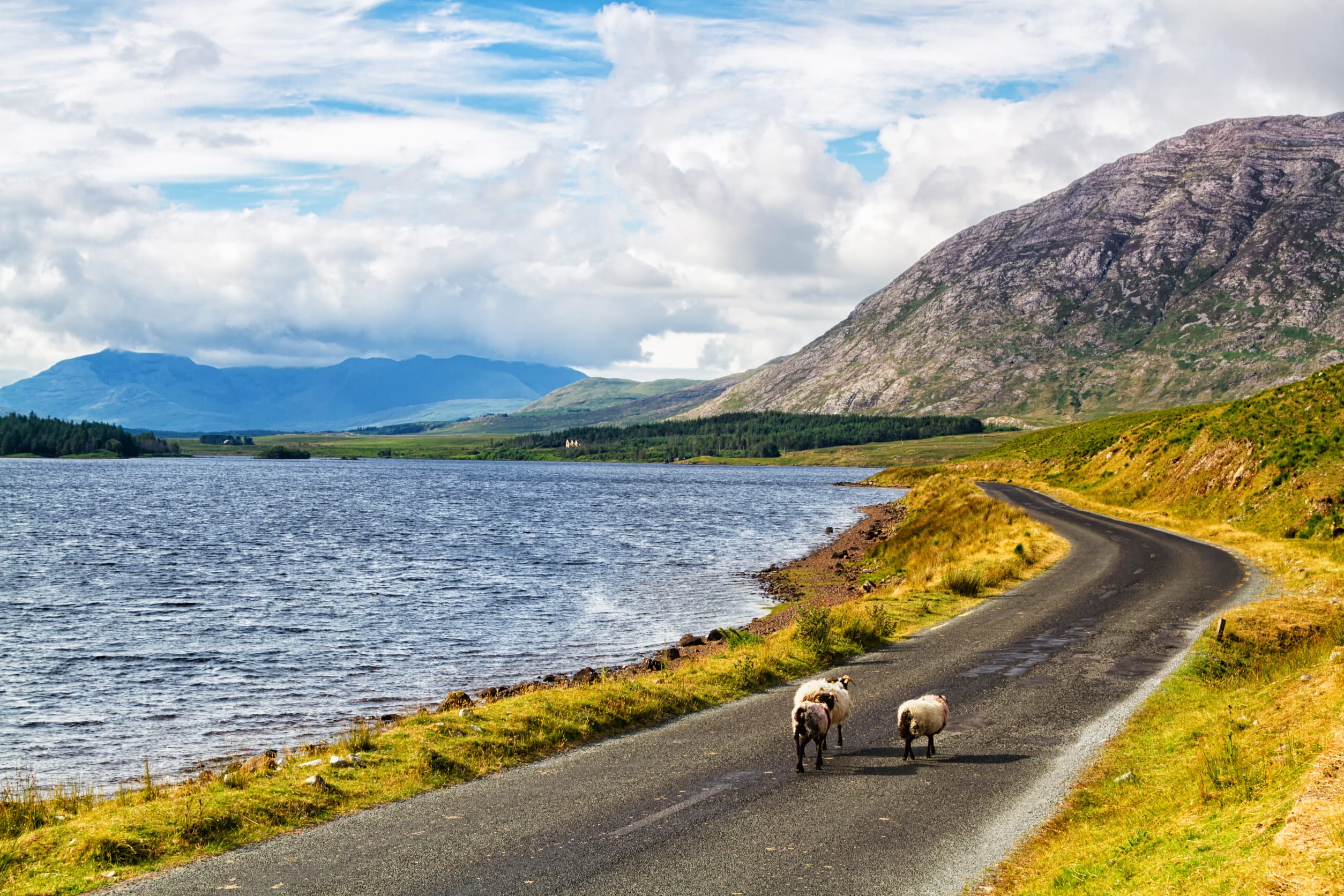
Hillwalk Tours the Connemara & the West of Ireland Map
The following is a map of the Hillwalk Tours Connemara & West of Ireland hiking route;
Connemara & the West of Ireland Terrain
Waymarking
Waymarking on the Connemara & the West of Ireland trail is generally OK and is symbolised by two feet or footprints. It is dotted all throughout the trail along the Western Way trail from Ougtherard as far as Westport to make sure you are on the right track.
On the Aran Islands there is no specific way-marking as it does not form part of the official Western Way hiking trail. Instead you might find signposts for different trails on the Island. For this section, we recommend walkers use the Hillwalk Tours route notes and directions.
If you are ever in doubt on the trail, you can always check the Hillwalk Tours turn by turn directions and route notes which includes everything you need to know about local information and history as you pass, along with trail alternatives. Alternatively, if you are skilled in map reading, you an consult your Ordnance Survey Ireland maps which are also included in your walking pack.
Difficulty
In terms of difficulty, the Connemara & the West of Ireland is not the most challenging as it lays as one of our flatter trails with a total aggregate ascent of 2,000m. If you’re a first time hiker, this trail boasts as a great introductory hike to start off your hiking journey.
There are almost no significant climbs along the trail with the exception of Mám Éan pass and the Sheefry Hills. The highest point of the trail is in the Sheefry Hills, near Drummin, where the route climbs to just over 475m. However, this climb can be avoided by taking an alternative route along the road. Most of the trail usually remains below 100m and only climbs over 200m in two other places.
The terrain along the Western Way consists of quiet roads, bog roads, open moorland, forestry tracks and mountain paths. Several sections of the Western Way follow quiet local roads, but this depends on which tour itinerary you choose. Some parts of the off-road trails can occasionally be quite wet and boggy, particularly after rainy periods, when there is a fast run-off of water from the mountains so it’s important to remain cautious when walking on this area of the trail to ensure ultimate safety.
Due to its karst and rocky landscape the terrain on the Aran Islands section can be a bit hard and uneven underfoot. The trail mainly follows quiet roads and rocky paths.
At Hillwalk Tours, we believe everyone, and anyone deserves to take on this trail, no matter the difficulty, which is why you can also find numerous ‘Gentle’ level itineraries for the Connemara & the West of Ireland trail, which reduce the daily distance hiked each day (but still following the same trail) and make it more manageable.
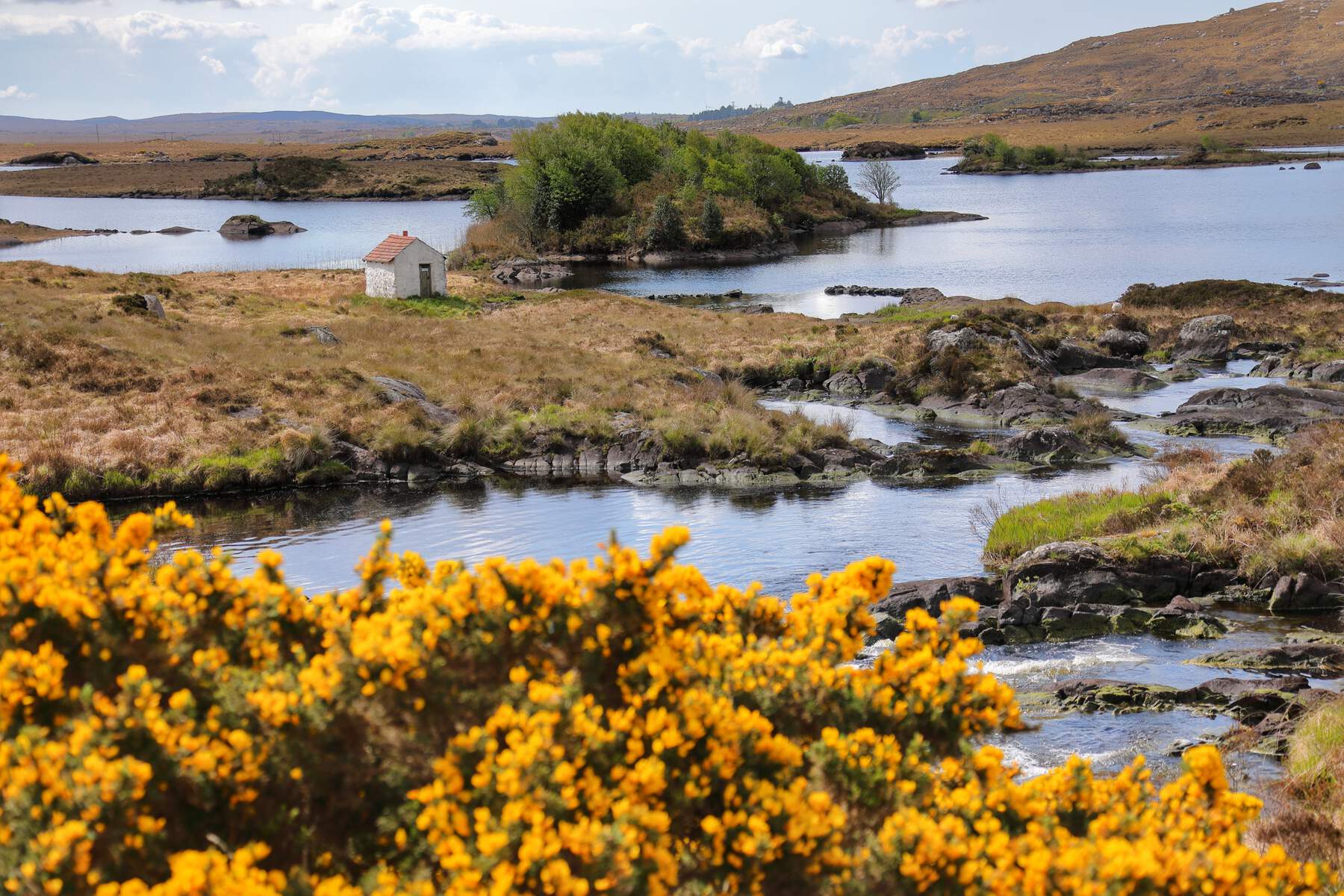
Sights & Attractions
Inis Mór
Inis Mór is an island off the coast of Galway boasting natural beauty and a unique landscape. It is well known internationally with over 50+ different monuments of Christian, pre Christian and Celtic mythological heritage. Cultural landmarks spanning thousands of years can be visited by walking or hiring a bike if you would like also when exploring the island. Popular events such as the Red Bull Cliff Diving Competition have been held here previously and you can also discover the magnificent bronze age cliff top fortification of Dun Aonghasa and the unique Teampull Bheanáin, said to have perhaps been one the smallest church in the world at one time. One things for sure, you’ll never run out of things to explore on this island.

Lough Corrib
Lough Corrib is the second largest freshwater lake in Ireland. It is found on the Oughterard to Maam section of the itinerary. It is said that the lake contains 365 islands, one for every day of the year, but a more recent study had place it with much more islands (1,327 to be exact!). The lake is abundant with salmon and wild brown trout and is around 35 miles in length, making for an anglers dream. You are able to hire a boat to take you out onto the lake and you can also visit one of the numerous angling centers that surround the lake.
Maumturk Mountains
The Maumturks Mountain Range lie to the east of the Twelve Bens Mountain Range, which are divided by the beautiful Lough Inagh Valley, and provide a wonderful and picturesque hiking experience for all. These mountains provide unequaled views of the Connemara wilderness encompassing lakes, rivers, forests and mountains as far as the eye can see. This range also boasts its own hiking challenge, the Maumturk Mountains Challenge. This challenge is one of the 24 range-specific Irish mountain challenges. It requires a very experienced hiker to visit 8 summits in the Maumturk Mountains range, as it’s certainly not easy!
Máméan
Máméan is a small pilgrimage spot within the Maumturk mountains. It has a tiny chapel, a mass altar and the Stations of the Cross scattered roughly around the rocky, boggy site. Translated to ‘The Pass of the Birds’, it is nestled between mountains with mesmerising views all around, and a quiet and peaceful atmosphere throughout. About 2000 years ago this site would’ve been seen as a Celtic shrine but was later claimed by an early Christian church and turned into a shrine dedicated to Saint Patrick.
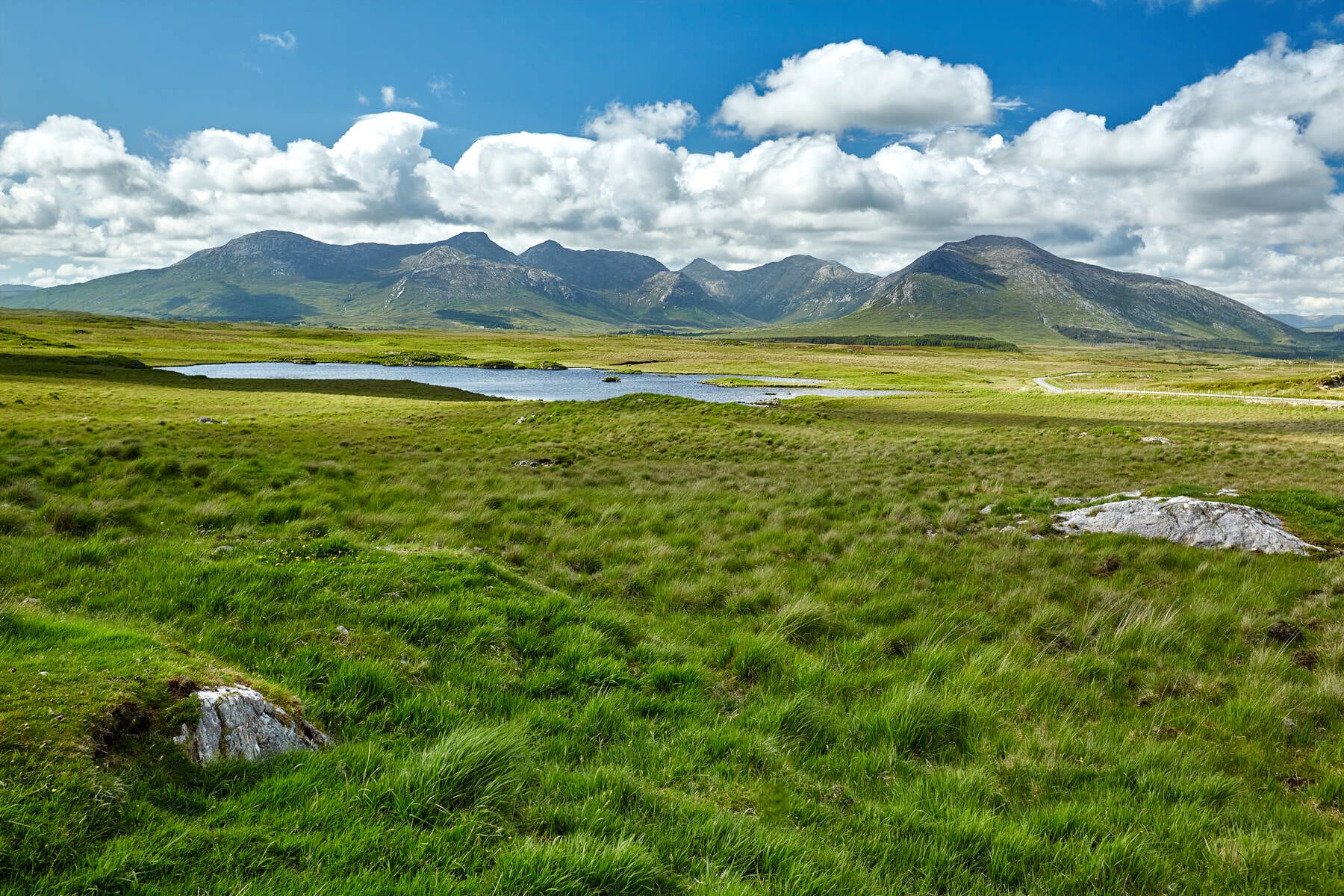
Twelve Bens
The Twelve Bens Mountain Range are part of Connemara National Park which covers some 2,000 hectares of scenic countryside in the West of Ireland. The beauty of this mountain range simply leaves you dreaming as the picturesque landscape that surrounds them draws you in. Surprisingly, each of the 12 mountains have their own unique name. The 12 names are:
- Binn Bhán (Benbaun)
- Binn Chorr (Bencorr)
- Binn Dubh (Bencollaghduff)
- Binn Bhraoin (Benbreen)
- Binn Doire Chláir (Derryclare)
- Binn Gabhar (Bengower)
- Muiceanach (Muckanaght)
- Binn Fraoigh (Benfree)
- An Chailleach (Bencullagh)
- Binn Breac (Benbrack)
- Binn Leitrí (Benlettery)
- Binn Glean Uisce (Benglenisky)
The beauty of these mountains are sure to captivate you and entice you by its incredible views and surrounding land.
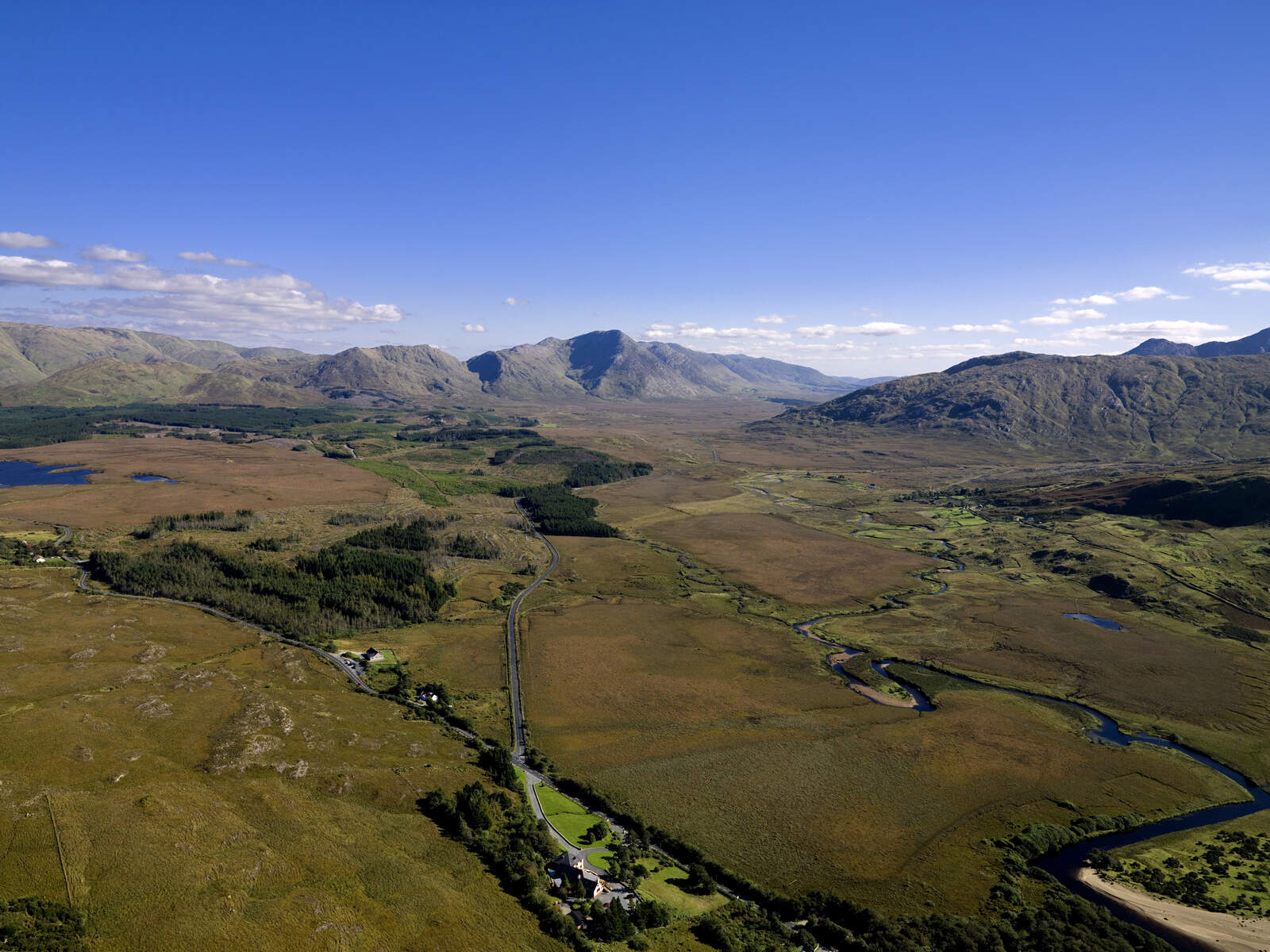
Killary Harbour
Amazingly, Killary Harbour is one of just three glacial fjords that exist in Ireland. It extends 16km from the Atlantic coast into the wonderful Ashleigh Falls in County Mayo. The fjord itself creates a dramatic border between the counties of Galway and Mayo. It goes as deep as 45 meters at its center. The harbour is also known for its shellfish farming. Strings of mussel ropes can be seen for much of the fjord’s length. You can also take a wonderful boat ride out onto the fjord and get a 360 view of the impressive mountains which surround it. The harbour also boasts many amazing fauna including ringed plover, mute swan, whooper swan, mallard duck, tufted duck, and barnacle goose.
Aasleagh Falls
Aasleagh Falls is a picturesque waterfall located on the River Erriff. It’s a beautiful wild place that also gives hikers a wonderful photo opportunity along the trail. The dramatic falls include a series of cascades and pools that flow down the rocky slopes.. The area around the falls is also home to a variety of wildlife, including native birds, fish, and mammals. If you’re lucky, you may even catch a glimpse of salmon jumping the falls. FYI: One of most memorable scenes from the iconic film ‘The Field’ was shot here at Aasleagh Falls, can you guess which one?

Croagh Patrick
Croagh Patrick is one of Ireland’s most famous landmarks / mountains. It is widely considered the holiest mountain in Ireland. Its religious significance dates back to the time of the pagans, when people are thought to have gathered here to celebrate the beginning of harvest season. In recent years, the mountain is more famously known for its annual event ‘The Reek’. This event attracts thousands of people worldwide to climb to the summit of the mountain in honour of St. Patrick on the last Sunday of July. The difficult climb is worth it though, with some of the most magnificent views at the peak. Amazingly, you will find a small white church at the summit which was built in 1905 by 12 local men, using local stone and cement that was hauled up the mountain’s steep sides by donkey.
Clew Bay
Clew Bay is located to the West of county Mayo and is overlooked by the magnificent Croagh Patrick. The bay consists of 365 islands, one for everyday of the year. Clare Island, the biggest island, guards the entrance of the bay. A lot of the islands on the bay are made up of ancient sunken drumlins. The stunning bay was carved out during the Ice Age by melting glaciers. FYI: The famous musician John Lennon owned and stayed on Dorinish Island, one of the islands in Clew Bay, which he planned to turn into a hideaway retreat.
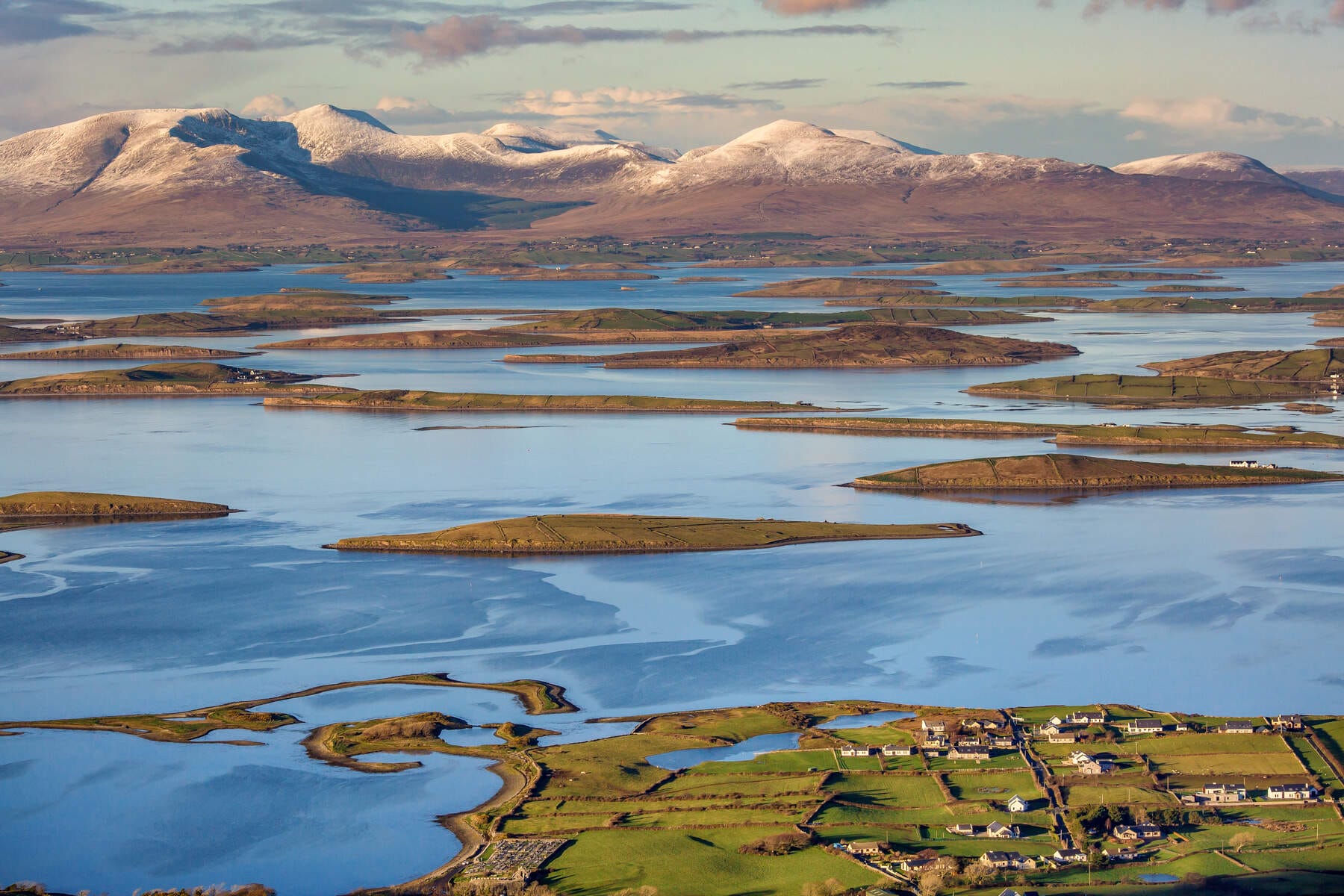
Wildlife
There is an abundance of Irish wildlife that can be observed while walking the Connemara & the West of Ireland trail. Throughout the trial be sure to look out for some of the West of Ireland’s amazing species from mountain hare to bats.
On the inner land, and recorded within the Connemara National Park, there are approximately 542 different species that were spotted. Some of this wildlife includes red deer, goats, 55 bird species, 4 species of dragonflies, 7 butterflies species, 51 species of macro-moth and hundreds of different plant species. Inland birds that have previously been spotted are the common shag, cormorant, great black-backed, herring, black-headed, common, glaucous and Iceland gulls.
You will also most likely come across the common cow, sheep, horse and donkey along the way as there are many of them scattered throughout the many fields and land throughout the trail. You might also catch a glimpse of the wildlife in and about Lough Corrib including hawks, otters, mink, stoat, frogs, and bats. Freshwater trout and salmon are fished for in the lake.
It’s important to keep in mind that when walking near animals and wildlife, proceed with utmost caution. For example, trying to feed them is of course out of the question. Also, try and refrain from running after animals for a ‘good’ photo opportunity as it may leave the animals in distress and discomfort. Leave the animals alone as much as possible – after all, you are visiting their “home”. Admire the beauty and awe from a distance where possible.
Midges
These miniscule biting flies get a special mention. During the summer months, Ireland is home to the pesky midge. Because Connemara is a remote, wet, bog location, it is the perfect breeding ground for midges so it’s important that you come prepared. We assure hikers walking this trail that there is nothing to worry about if bitten by one of these insects, but bites may cause red itchiness. That is why we advise anyone taking this Hillwalk hiking holiday to bring insect/midge repellent. Our route development team recommend Smidge as their go to insect repellent. A midge net would also come in handy!
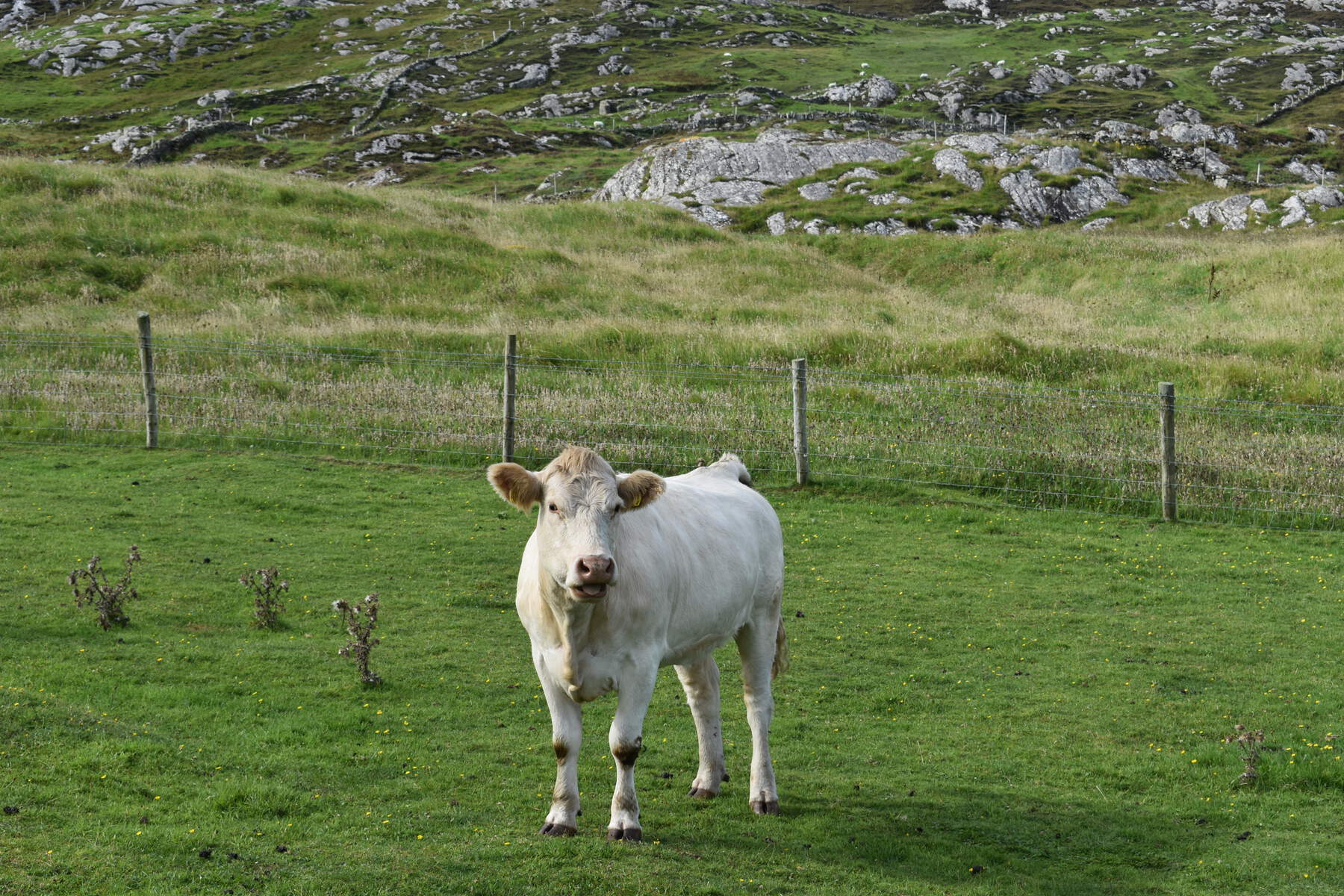
The People & Local Customs
The people of Connemara are known for their warm and friendly nature. It is customary to greet others with a smile, engage in small talk, and show general friendliness towards both locals and visitors. Hospitality is highly valued, and you may often find locals offering assistance or striking up conversations. Connemara has a rich musical heritage, and traditional Irish music plays a significant role in local customs. Many pubs in Connemara host live music sessions, and it is customary to join in or enjoy the lively atmosphere. The local residents take pride in their cultural traditions, including music, dance, and storytelling.
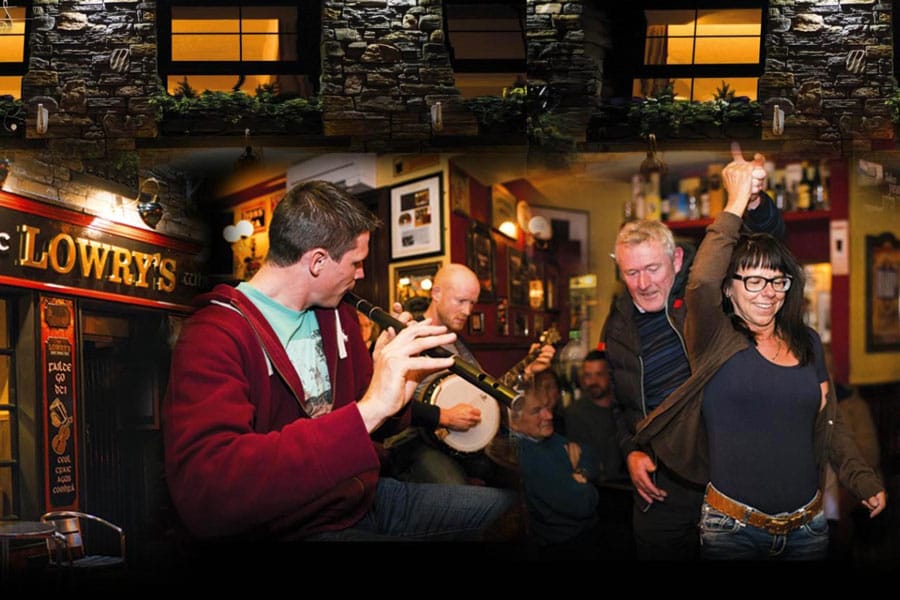
The Irish language, also known as Irish Gaelic or simply Irish, holds a special place in Connemara. Signs, street names, and public announcements are often bilingual in English and Irish. While English is spoken, the Irish language is spoken daily in most parts and Connemara has one of the last pockets of native Irish speakers in Ireland. Showing respect for the Irish language and culture is appreciated. Learning a few basic Irish phrases like “Dia duit” (Hello) or “Go raibh maith agat” (Thank you) can be a pleasant gesture.
Tipping in Ireland is a relatively new phenomenon due to the influx of tourists. However, it is important to note that tipping isn’t socially mandatory and ultimately depends on your own personal preference and of course, in certain environments. When dining in a restaurant, it is normal to leave a 10% tip, whereas anything above 10% is only really given if the service was found to be outstanding. Tipping is not expected in any pub although if you receive table service, a tip is graciously accepted. You are also not expected to tip B&B’s, guesthouses or hotels unless you feel the need to.
Connemara & the West of Ireland Pop Culture
Films and TV
Due to it being the home of some of the most incredible landscape in the country, it’s no wonder that Connemara and the Aran Islands have often been the backdrop to film and TV series. Let’s take a look at some notable and even award-winning cinematography that took place in the land of savage beauty.
The Quiet Man (1952)
Among the stone fences, bridges, and babbling brooks in Cong is where John Ford shot the legendary film ‘The Quiet Man’. Cong itself comes from the Gaelic “cunga” meaning ‘narrow neck of land between two lakes’. Ford chose the area because of the nearby 13th-century Ashford Castle Hotel, which is considered one of the most luxurious hotels in Europe today. Many who have watched the film will also recall the bridge in the opening scenes where actor John Wayne dreams of his youth while hearing his late mother’s voice describe White O’Morn cottage. The scene was filmed deep in the cradle of Connemara, in Oughterard Co. Galway and tourists from all over the world come to visit the local attraction. Walkers on the Connemara & the West of Ireland trail will pass close by to the original White O’Morn cottage which is now sadly in ruin.
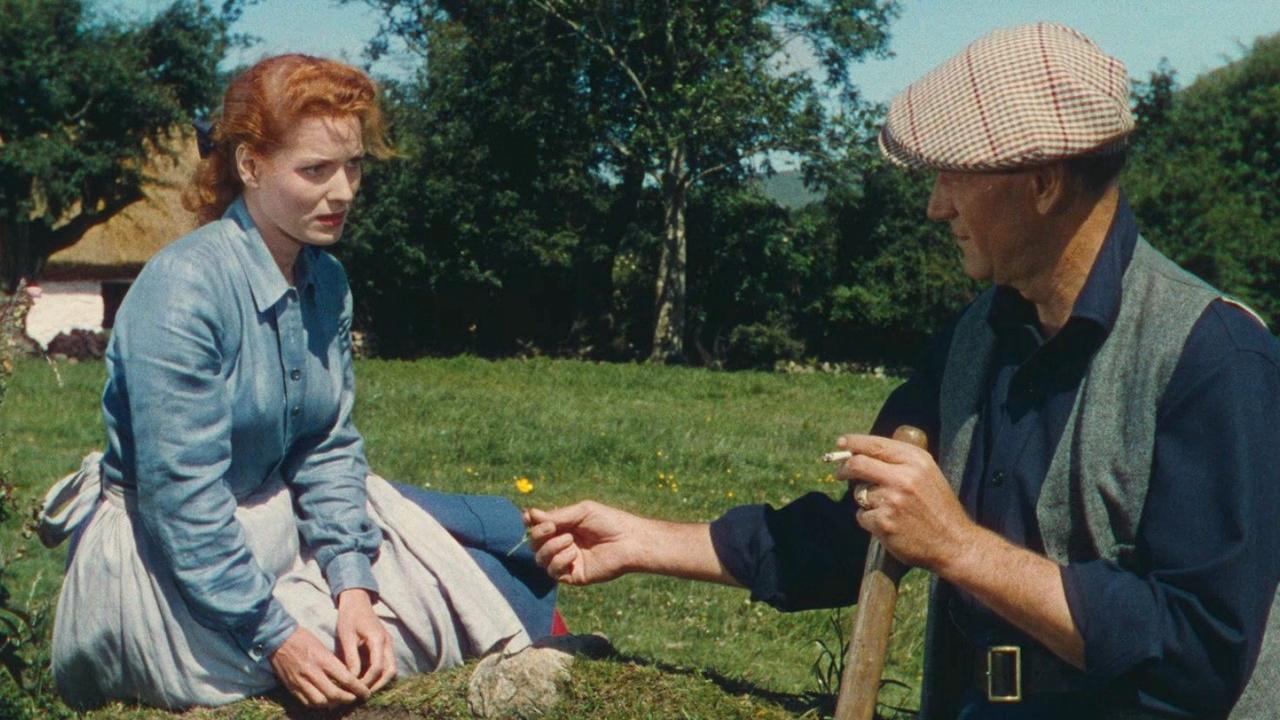
The Guard (2011)
To date, The Guard is believed to be the most successful independent Irish film ever made. The movie was shot in Connemara toward Spidéal, Barna, and Lettermullen. With backdrops of dramatic sea, sky, boglands, and moody lighting, it’s no surprise that Connemara was the top choice for filming.
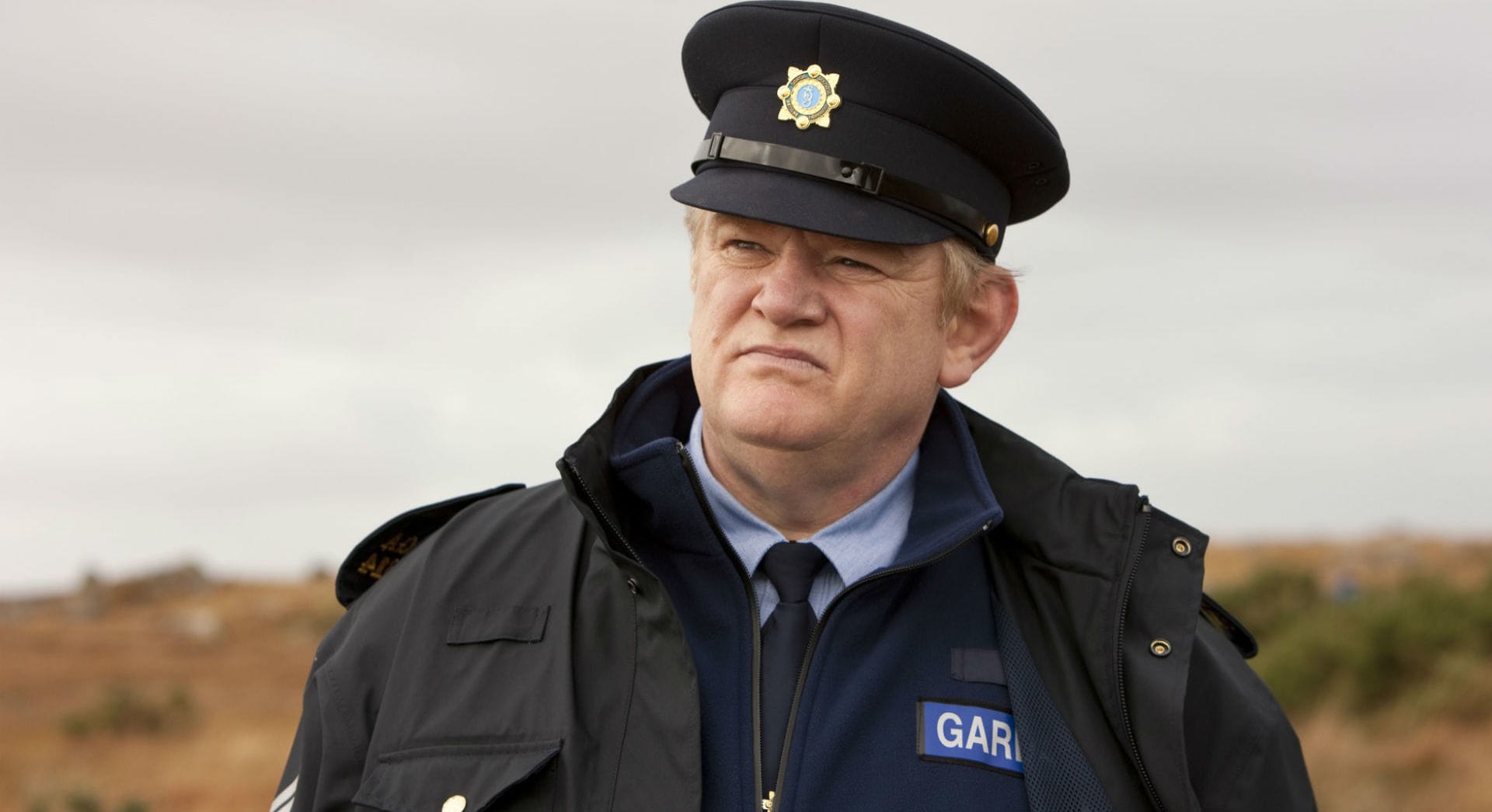
Marley and Me (2008)
A movie that truly tugged at the heartstrings found love in the West of Ireland. The blockbuster film starring Jennifer Anniston and Owen Wilson had several honeymoon scenes shot in and around the Connemara region. Inagh Valley (along the trail), Lough Na Fooey, Glebe Stone Circle, and Ballymagibbon Cairn towards Cong were all used in the filming.

Leap Year (2010)
The majority of ‘Leap Year’s’ filming took place on Inishmore Island of the Aran Islands, which you can find on our Connemara and the West of Ireland trail itineraries. What’s claimed as the Dingle Peninsula throughout the movie is actually Inishmore, and ‘Declan’s Pub’ is in the village of Kilmurvey on the island. The final proposal scene also takes place not far from the village of Kilmurvey just outside the walls of Dún Aonghasa. It’s really no surprise that the filmmakers chose the location for the movie’s pivotal scene, as the 100-metre high cliff makes for a spectacular backdrop coupled with immaculate views of the Irish rugged coastline.
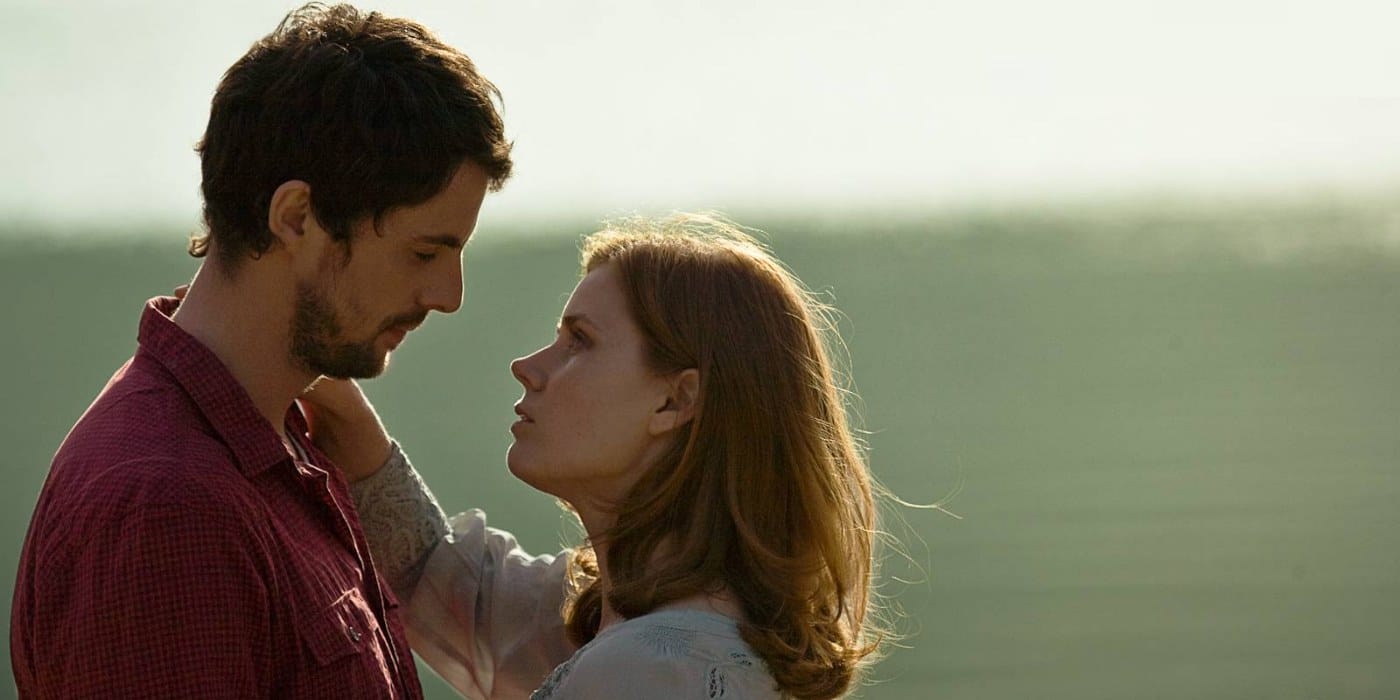
The Field (1990)
Most of iconic film, ‘The Field’, was shot throughout Connemara and County Mayo, in particular, Leenane and Killary Harbour. The pub scenes were shot in Gaynor’s Bar, on the main street of Leenane. ‘The Field’ itself is about five miles outside town on the road to Westport, at the foot of the Partry Mountains. Other iconic scenes such as the fight between ‘Tadgh’ and ‘The Yank’ was shot just over the border in County Mayo at the picturesque Aasleagh Falls.
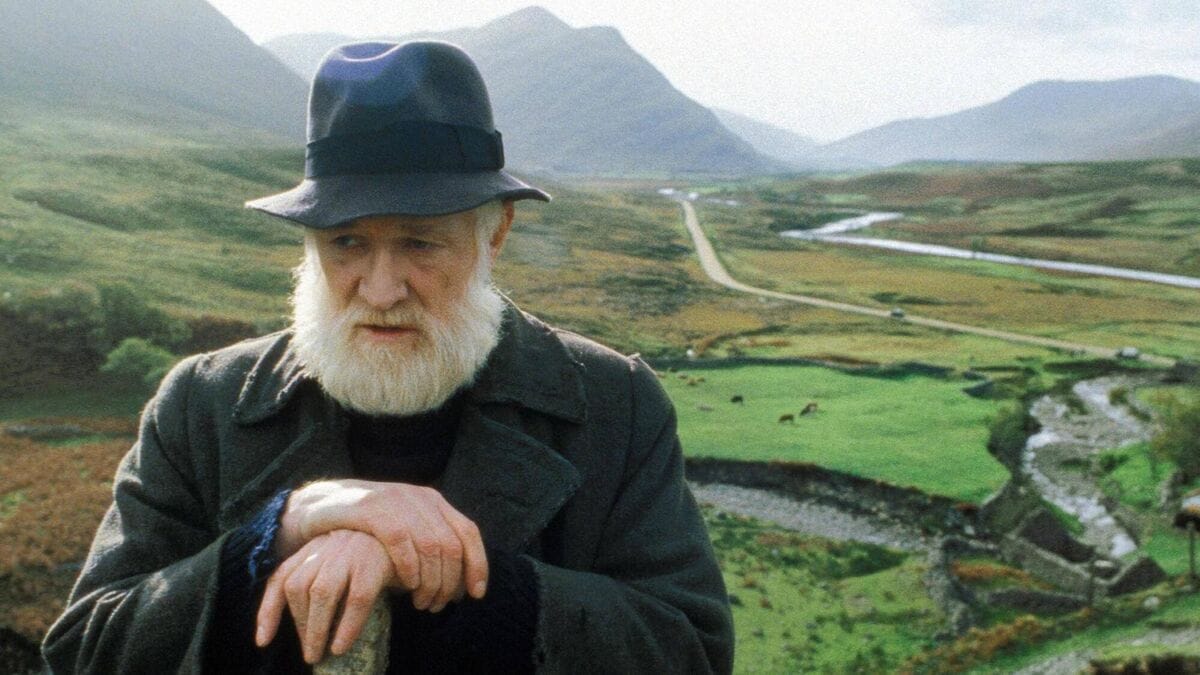
The Banshees of Inisherin (2022)
The Banshees of Inisherin was mostly filmed between 2 islands, Achill and Inishmore. You can visit the stunning Inishmore Island of the Aran Islands as part of our Connemara and the West of Ireland tour. With its huge cliffs, verdant rolling hills, rugged stone walls and paths, Inishmore island is as much a main character as is Colm and Pádraic. We think it should be nominated for an Oscar itself!

Irish Wish (2024)
This popular Netflix rom-com, starring Lindsay Lohan, follows Maddie, who is a bridesmaid-to-be at the wedding of her dream man, Paul Kennedy. Irish locations play a prominent role throughout the movie, hence the title. The scenic, charming, and historical town of Westport serves as the main village in Irish Wish.

Le Lacs du Connemara (1981 – Song)
Did you know that there’s a famous and much loved French song about beautiful Connemara? Les Lacs du Connemara (or the ‘Lakes of Connemara’ as it translates) was a song written and composed by the famous French artist, Michel Sardou, almost by accident. In fact, Sardou had never visited Connemara before writing the song, but instead had drew inspiration from the film ‘The Quiet Man’. The song depicts the beautiful Connemara and Irish landscape, its lakes, the weather, among other mentions of Oliver Cromwell, the ponies of Connemara, religious conflicts to name a few. Be sure to have a listen for yourself!
Food and Drink
Below are just some of the food and drink most famously associated with the West of Ireland.
Seafood
Seafood is an integral part of the local cuisine in the west, which is unsurprising given the Atlantic Ocean is at its doorstep. Shops, cafes, and restaurants along the west pride themselves on using high-quality local produce to make some of the most delicious dishes to be found on the Emerald Isle. Centuries of skill and craft has placed the West of Ireland where it is today—a true seafood mecca. Some examples of exquisite cuisine found here is smoked salmon, seatrout, scallops, mussels, lobsters, and oysters.
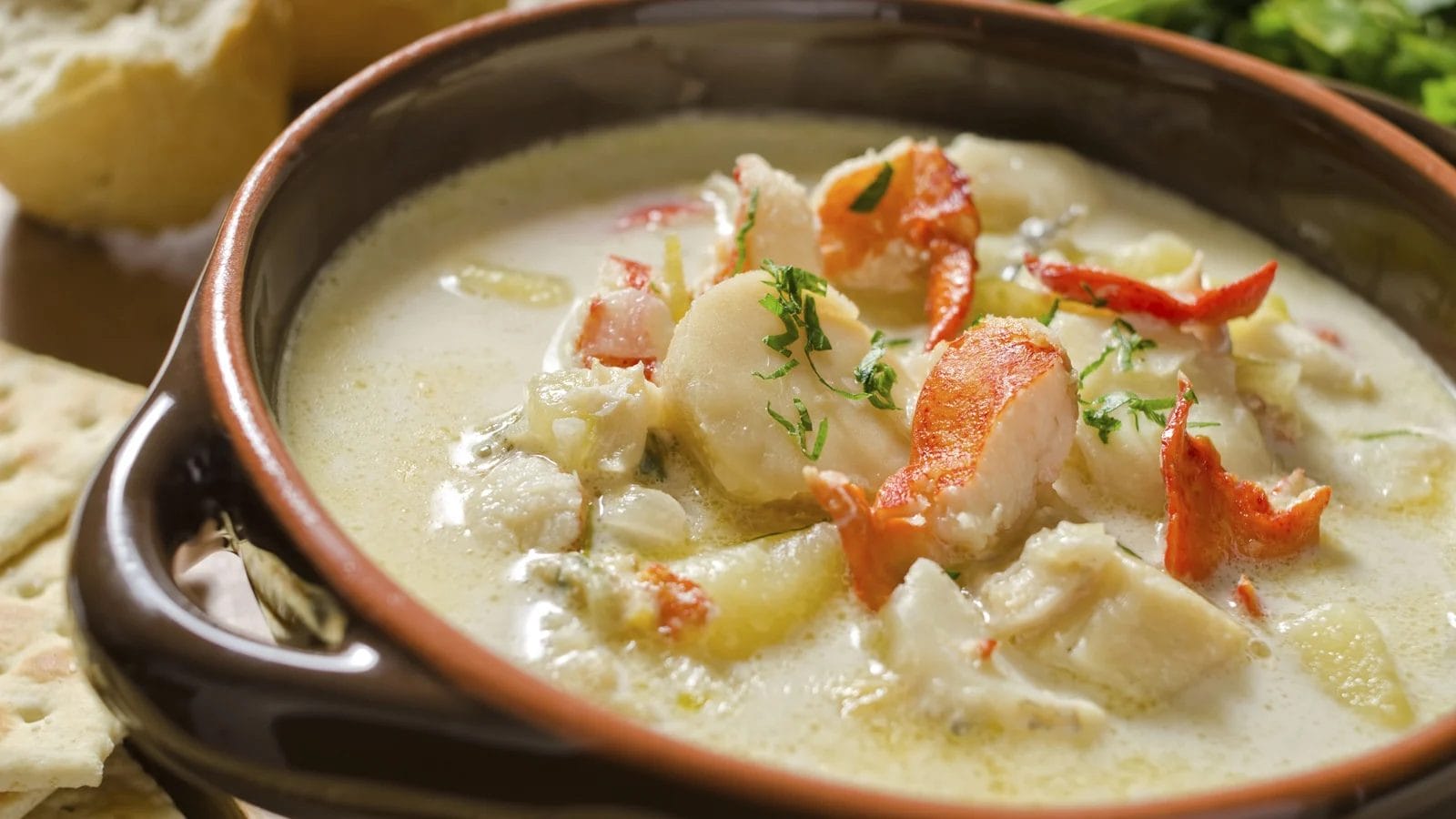
Full Irish Breakfast
A full-Irish breakfast is typically made up of sausages, bacon, black and white pudding, eggs, baked beans, mushrooms, grilled tomatoes and bread. Irish soda bread is used mostly (see below) and it is typically accompanied by lots of tea or coffee. If you are in a hurry, go to a local shop and get a breakfast roll – whereas many of the above ingredients are added into a fresh baguette. You really have not lived if you haven’t tried one of these!
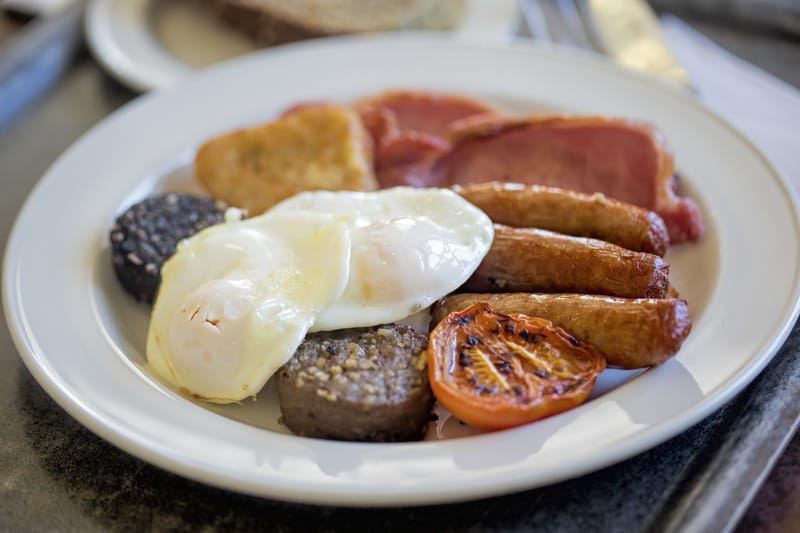
Black and White Pudding
Yes, we knew some of you might be wondering what pudding refers to… it is popular throughout Irish cuisine. Pudding is basically sausage meat blended with oats or barley. There is a significant difference with black and white pudding as black pudding contains blood whereas white pudding doesn’t.

Traditional Fish and Chips
The West of Ireland take its fish and chips very seriously. You will find an abundance of chippers along your trail, meandering in and out of the towns and villages of the west. Expect everything from fresh cut chips, battered fish, and an assortment of condiments. While the region is home to Ireland’s answer to Mcdonald’s—Supermac’s—there are also an array of local establishments, like the famous chipper, McDonagh’s in Galway to be found.
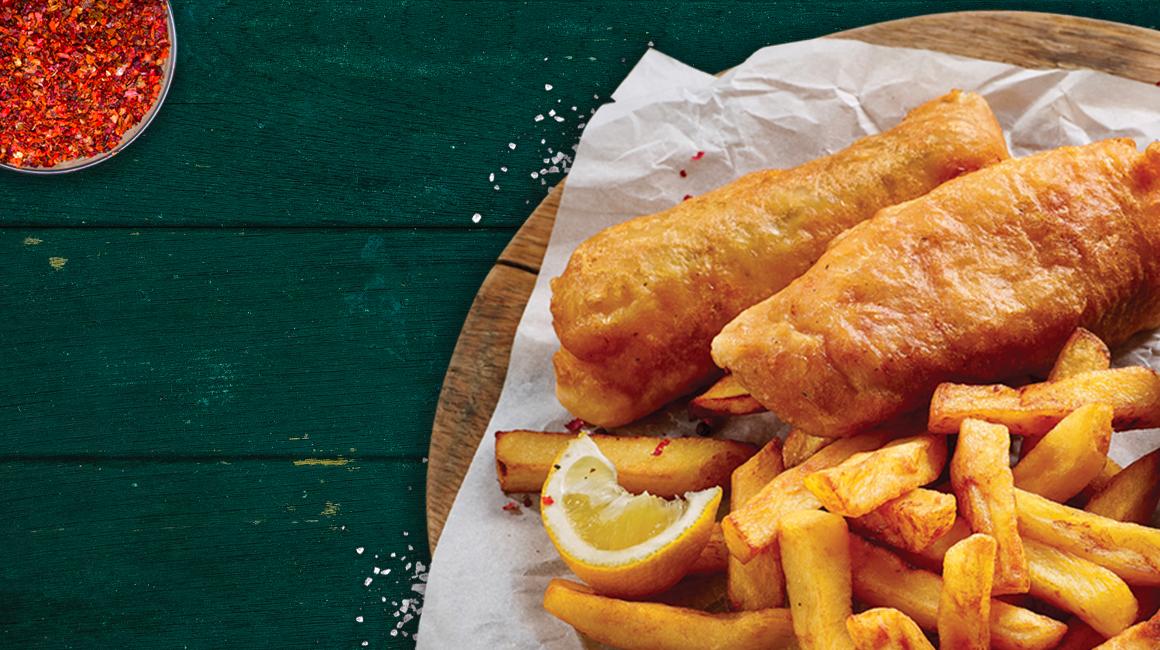
Bacon and Cabbage
Although at first glance it may sound like a bland dish, bacon and cabbage is one of the most popular dishes across the country. It typically comprises a salted pork shoulder, boiled with onions, carrots, herbs and accompanied with cabbage. The dish is topped off with a creamy parsely sauce, making it unexpectedly delicious.
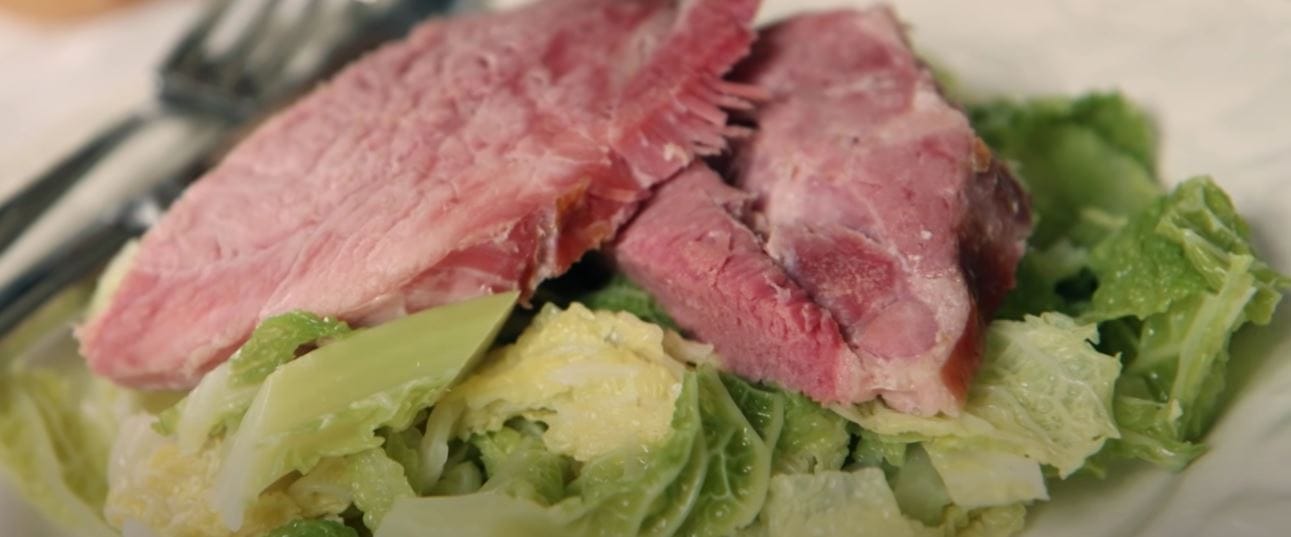
Irish Stew
Warm up the body after a day of hiking with a homegrown bowl of hearty Irish stew. The perfect dish during the depths of winter or a chilly spring day, stew is made in a single pot with vegetables and beef. A satisfying and tasty meal that will feed the belly and the soul.
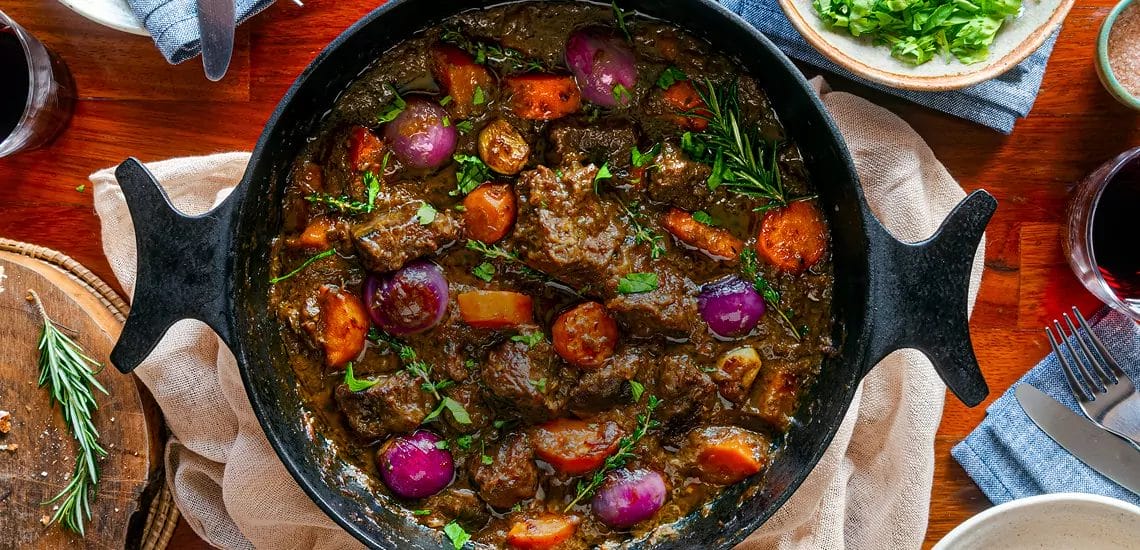
Shepherd’s Pie
Possibly Ireland’s most beloved dishes, Shepherd’s Pie is made with a layer of ground beef or lamb and veggies, and is topped with creamy mashed potatoes before being baked to perfection. The dish actually originated in Scotland where crust was used in place of potatoes. However, once it arrived to Ireland, potatoes were quickly opted for instead, and the dish has become a household favourite throughout the country.
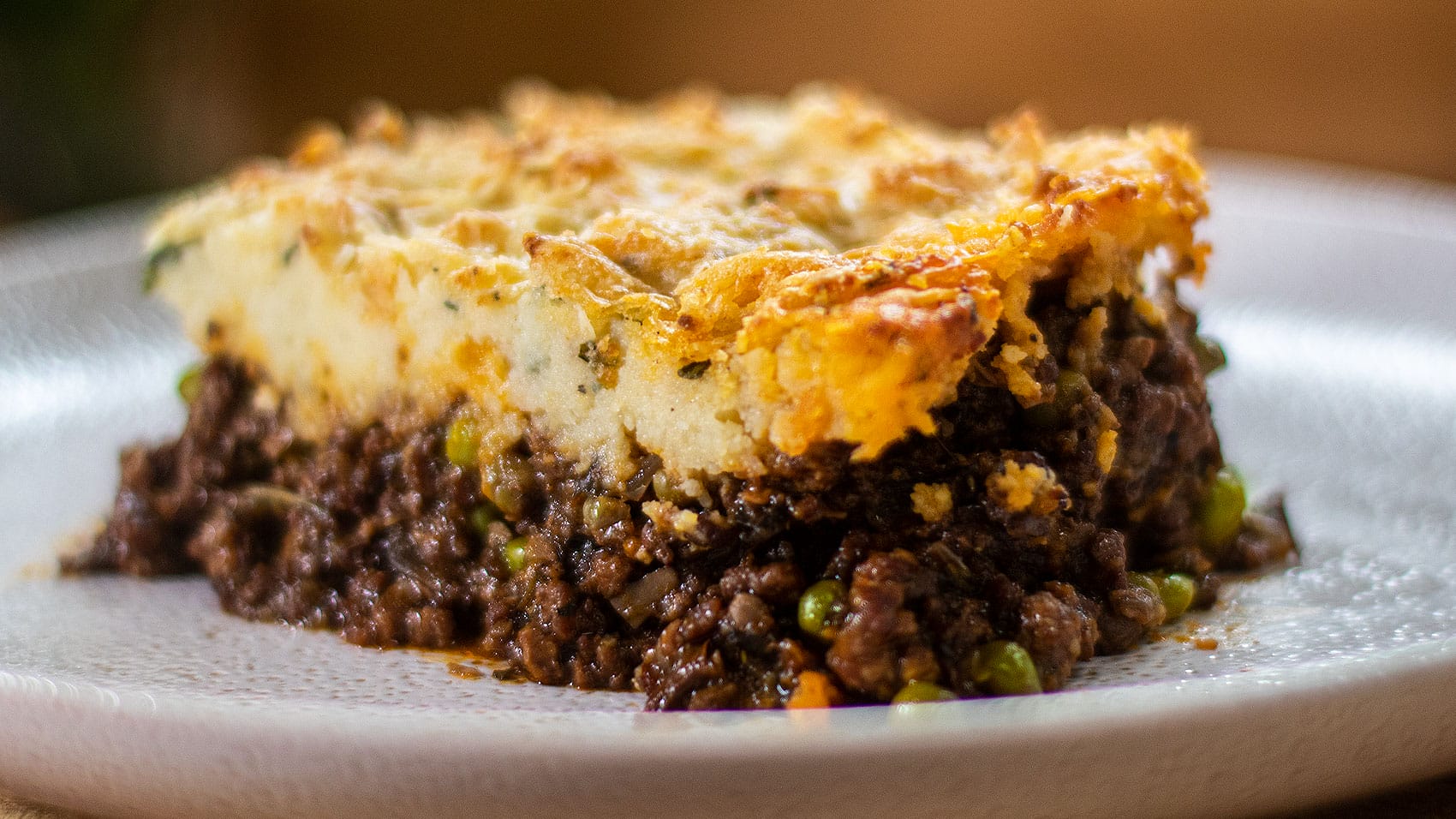
Guinness
It would be near impossible to head west and dart into a cosy Irish pub to not try a pint of creamy Guinness. The west is famous for its dimly lit, traditional pubs with tunes playing and pints flowing all night long. Popular bars like Tig Coili and Ti Neachtain in Galway City, and Matt Molloy’s and Dunning’s Bar in Westport, all serve as a hideaway from the cosmopolitan bustle.
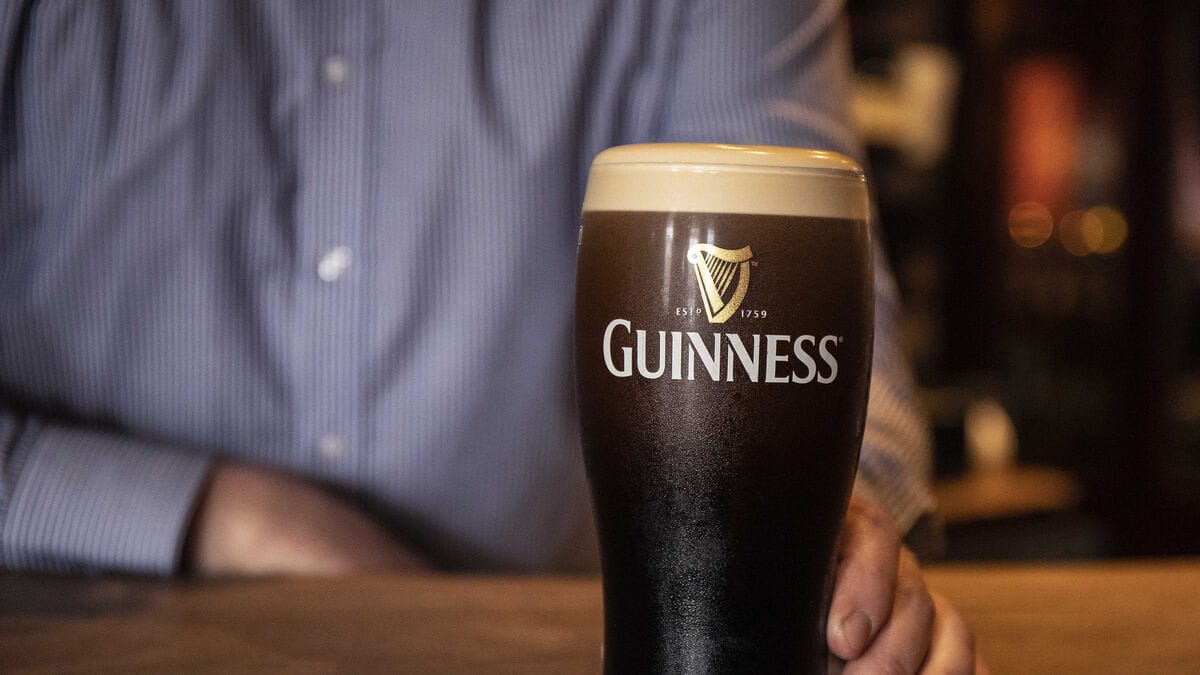
Irish Coffee
No, we aren’t talking about Irish roasted coffee beans here. This is a caffeinated alcoholic drink that consists of whiskey, hot coffee, brown sugar topped with cream. There are plenty rumours about how this hot beverage came to fruition but the most commonly believed story is that a head chef in the restaurant of the Foynes Airbase added whiskey to the coffee of some tired passengers who were awaiting a storm to pass. The rest is history!
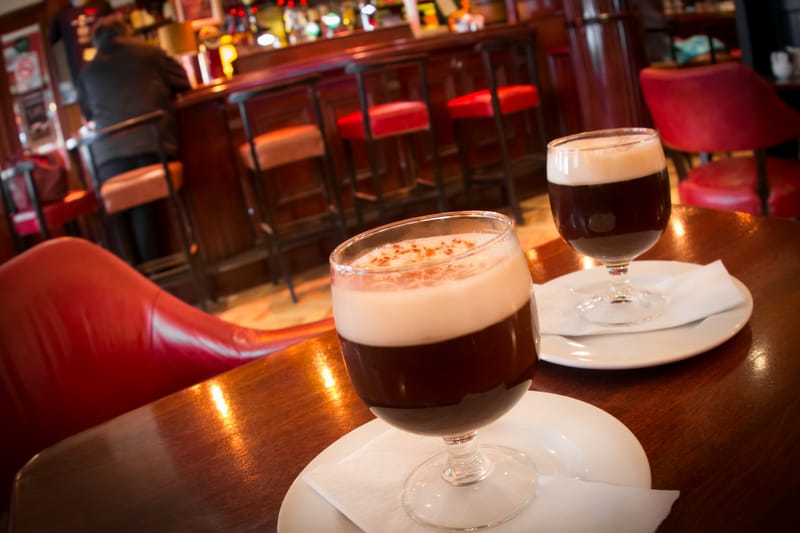
Nearby Trails
There are various other Irish trails available to you once you have completed the Connemara & the West of Ireland trail. Here are the other Hillwalk Tours Irish hiking tours we offer:
- Dingle Way
- Wicklow Mountains
- Kerry Way
- Antrim Glens & Coastline
- Beara Way
- Burren Way
- Sheep’s Head Way
- Kerry Camino
- St. Kevins Way & Glendalough

Connemara & the West of Ireland Tips and FAQS
Probably the most common and important question asked when walking any trail or planning any hiking holiday is – what will I pack?
Once you have fully booked your tour, you will receive a detailed ‘recommended equipment’ list inside your walking pack. For those of you who are still unsure, here are some of things we advise you bring with you along the Connemara and the West of Ireland trail:
– Waterproof Clothes
– Fleece and other warm clothing
– Base Layer
– Light and comfortable trousers
– Wicking Socks
– Suitable Hiking Boots
– Backpack/Rucksack
– Hat and Gloves
– First Aid Kit & Foil Blanket
– Whistle & Torch
– Insect Repellent & Midge Net
– Mobile Phone
– Plug Adapter/Converter
For more on what to pack – check out these packing musts.
Generally, our tours take place between the months of March to October to hopefully allow for good, dry weather and longer days of daylight while you carry out your tour. This will hopefully ensure that you enjoy your hiking experience with us to the fullest. You can also check out the individual tour page for the Connemara & the West of Ireland trail on our website.
Our 7-Day tours, across all levels, consist of a total of 5 days hiking the actual trail. This is due to the fact that you will need extra days for traveling to and from different locations on the trail such as your arrival and departure. The first and last days of all our hiking tours are travel days used to transfer to/from the town where your hike will begin/end. If you would like to hike for 7 days, simply select one of our 9-Day tours.
Our 7-Day tours include 6 nights of accommodation – specifically the first 6 nights on your hiking tour. Your tour finishes on the seventh day when you check out of your last accommodation.
As much as you might miss your dogs while you’re away, it is advised to leave your furry friend at home and get a little me time for a change. If you can’t resist and decide to bring them along there are a few things you need to know. Firstly, it is advised that dogs are always kept on a short lead and close to their owners. Secondly, dogs are not allowed on off-road sections of the trail which makes up a large portion of this tour. However, there are some on-road sections of the trail where you are permitted to walk your dog but it will become a problem as to where they will go on the off-road sections. Thirdly, due to most of the accommodations we work with not accepting pets of any kind, it is not possible to bring any pets, such as your dog, on a Hillwalk Tours hiking holiday. Realistically, it may be more hassle than it is worth, and it might also distract you from taking in the spectacular views and remaining in the present moment.
To ensure you’re fully equipped and informed throughout your trail we provide a very informative walking pack that you take with you on your trail. This pack has every detail you will need to successfully finish your trail without any disruption. We advise that you carefully look through this pack before embarking on your journey so that you have some sort of idea of where you’re going and what you will entail throughout the journey. Included in this pack is as follows;
– Route notes (prepared by a member the Hillwalk Tours team who has walked every step of your tour)
– Detailed hiking map(s)
– Waterproof map-case
– A sneak-peak at where you will be staying
– Our tips on the most interesting attractions to visit along the trail
– A look at fascinating local history
– A guide to the best places to eat and drink
– Mountain safety information, emergency contact details & the country code
We believe that the beauty of the Irish countryside should be enjoyed by everyone. With this in mind, we designed our hiking tours to cater for practically all levels of fitness. Our range of ‘Gentle’, ‘Moderate’ and ‘Challenging’ hikes in all regions allows you to decide how far you wish to walk each day. So, whether you are a novice walker or an experienced hiker, we have the tour to suit you.
Yes, we are more than happy to organise an additional night for you anywhere you please along the trail. Suggestions on interesting places to take a rest day are available on the tour pages of each hiking region. See the Extra Days/Activities section for each tour for more information.
Connemara & the West of Ireland Image Gallery
Hillwalk Tours
About Us
Hillwalk Tours is an award-winning walking tour operator which specialise in self-guided walking holidays in Ireland, Scotland, England, Wales and along the Camino de Santiago in Spain. Our goal is to create happy experiences for all of our customers, suppliers & staff.
Fill out the form below with any questions you may have and we will get back to you promptly.
Follow us across our social media platforms
Customer Reviews
Leave No Trace
We like to walk in nature and since you are reading this – we believe you do too! It is important to ensure that our impact on the environment is limited so that hikers can enjoy the same view after us. The rule applies: when you leave, make sure that nature looks the same as when you arrived or simply put “leave no trace.” As more and more people take to the great outdoors, our collective mark on the environment increases.
What does this mean in reality? Of course, do not leave any rubbish or waste behind. Do not collect stones, flowers, or other “souvenirs”. Don’t carve your name on a tree or break branches… I think you get the drift. It is imperative for walkers to play their part in making sure litter, damage to vegetation and all forms of pollution are limited.
Noise can also be a form of pollution. Whoever walks through a forest talking and laughing loudly, for example, ruins the peace and quiet of other walkers, who can no longer hear the birds. The same goes for cell phones that suddenly start ringing. Keep the volume down and respect your surroundings. Ultimately, the point is to ensure that as many people as possible can enjoy walking through nature. So that applies to you, but also to those who tread the path after you.
Hillwalk Tours proudly supports sustainable tourism and loves the countryside as it is – wild, peaceful and clean. We are proud to support the “Leave No Trace” initiative that aims to preserve the natural beauty of each nations countryside where we offer hiking holidays. We try to create happy experiences for our accommodation too, and the restaurants, shops and taxi companies that serve our walkers. These are often small businesses located in isolated areas that have been left behind by urban migration and a lack of investment in rural regions. Their warm hospitality and friendly welcomes epitomise the magic of a Hillwalk Tour and we’re dedicated to helping keep these rural communities alive.
The Benefits of Hiking
In recent years, walking and hiking outdoors has been widely reported to have numerous physical and mental health benefits. The following are examples of some of these benefits:
Improve strength and fitness
- Weight loss
- Muscle gain
- Improve metabolism
- Improve digestion
- Better quality sleep
- Increase in Vitamin D
- Improve discipline
- Sense of achievement
- Living in the present moment
Make A Booking
Are you ready for your Connemara & the West of Ireland adventure? Get started by simply filling out the booking form below!



